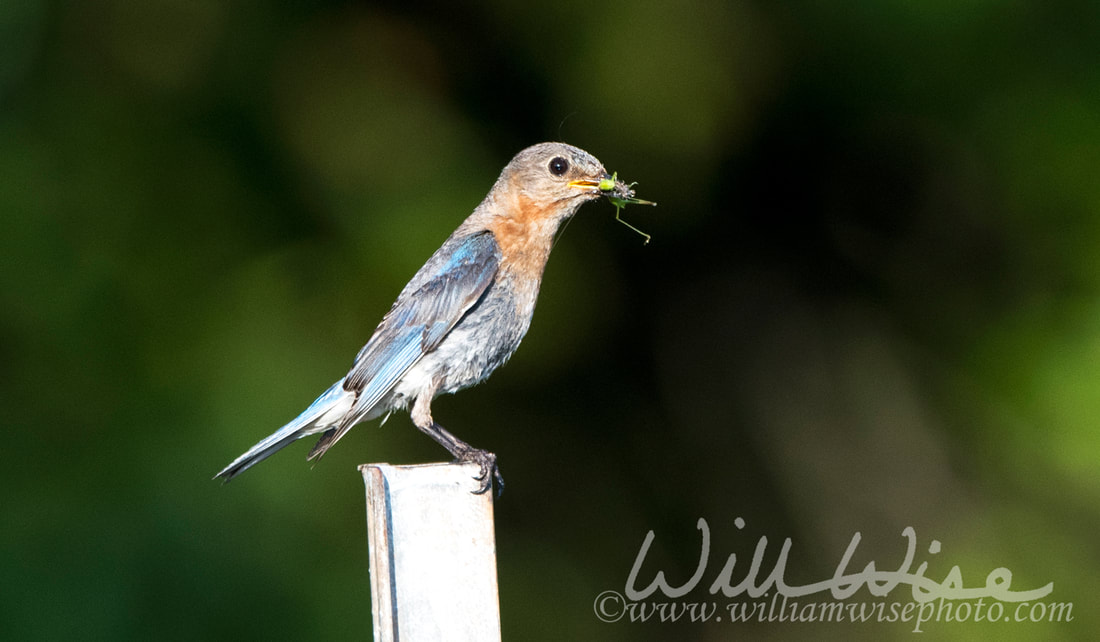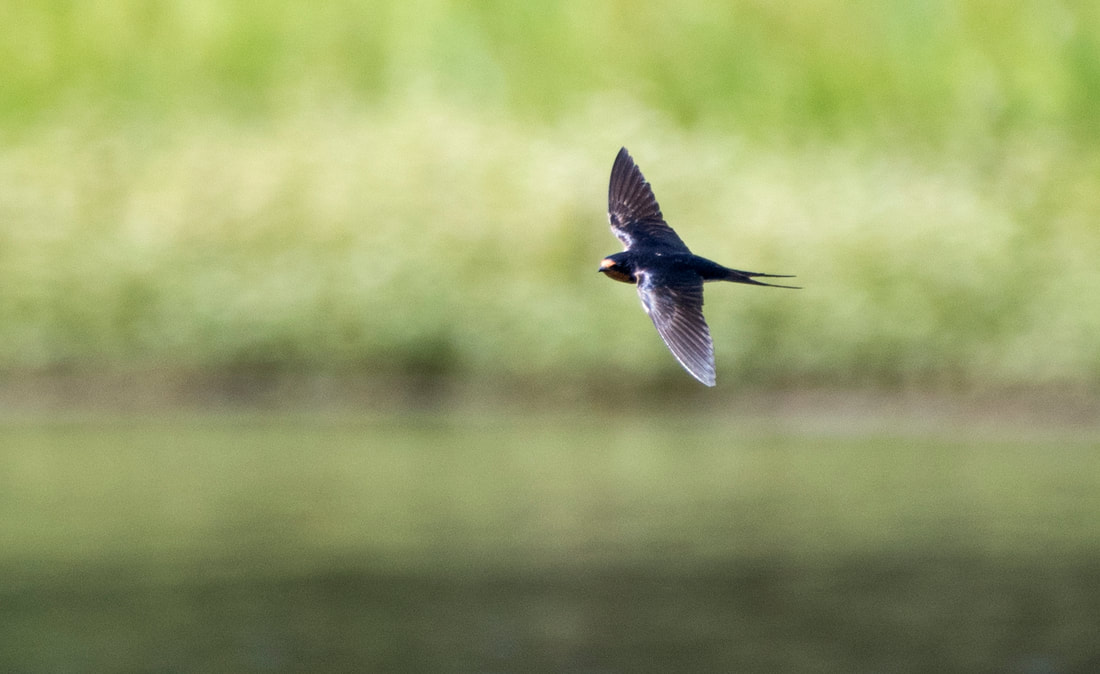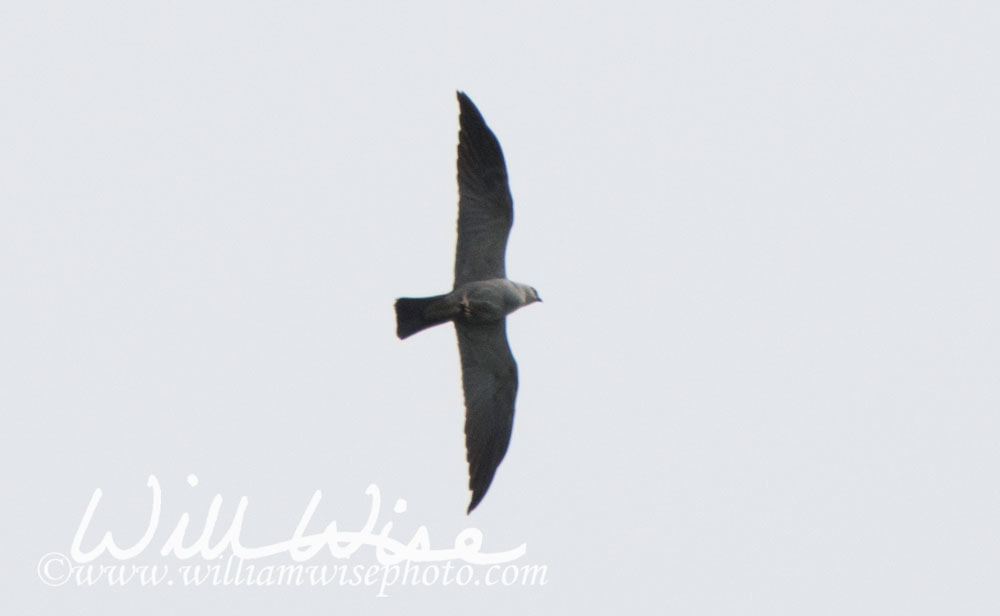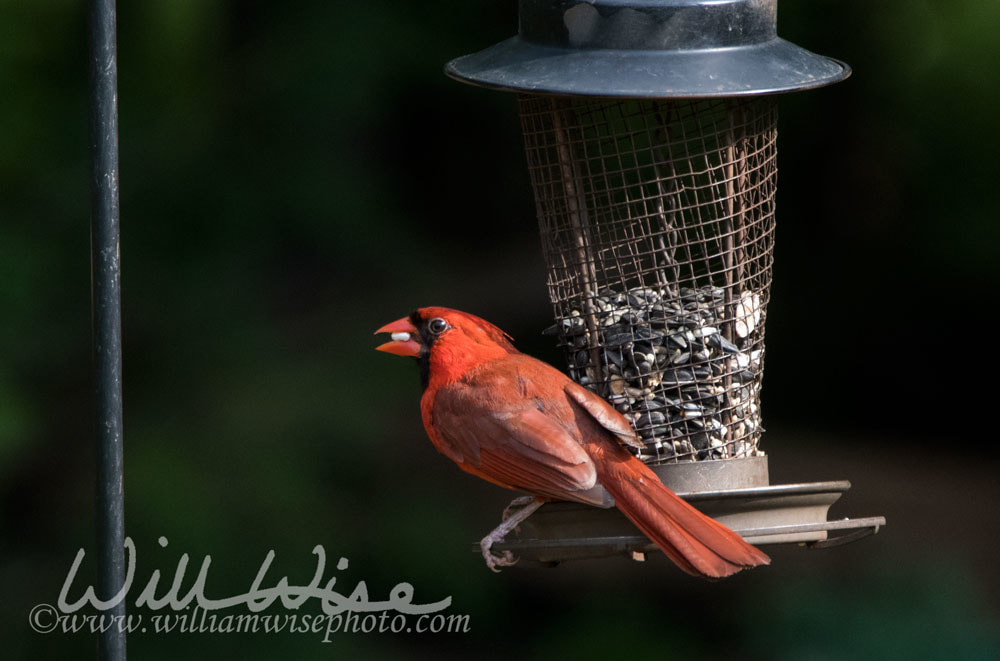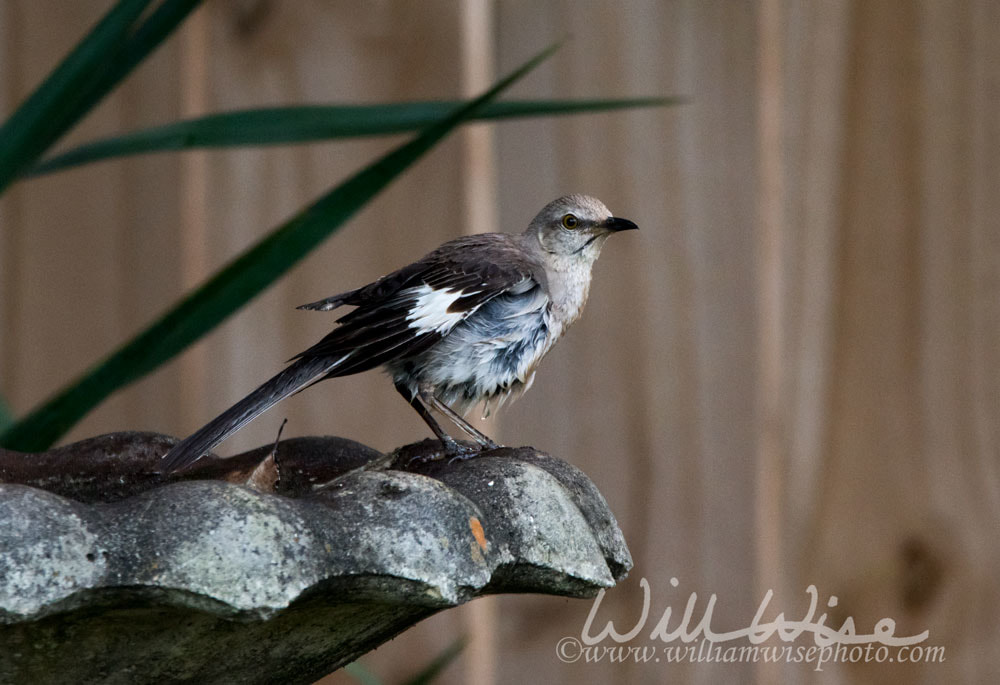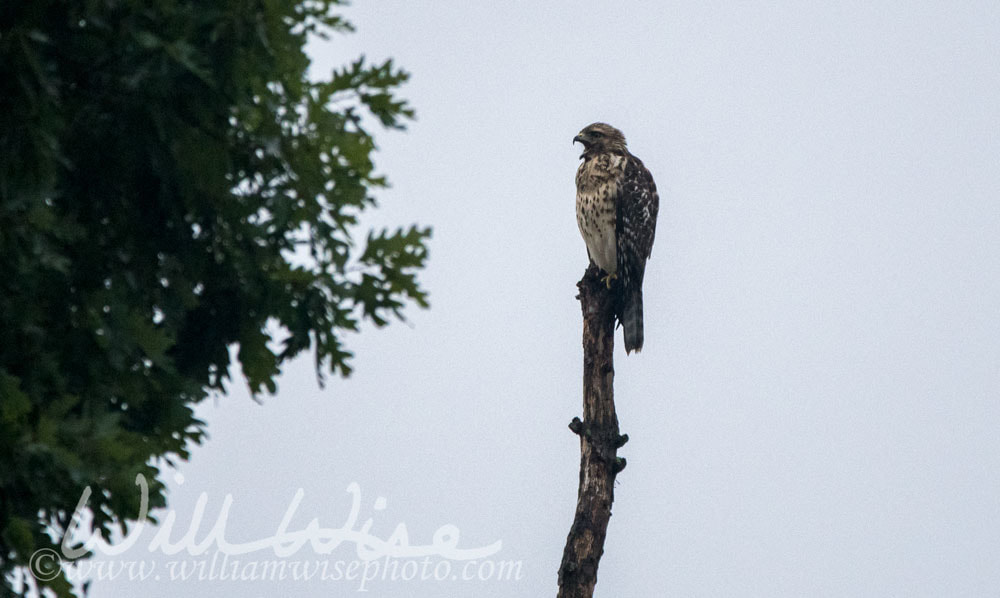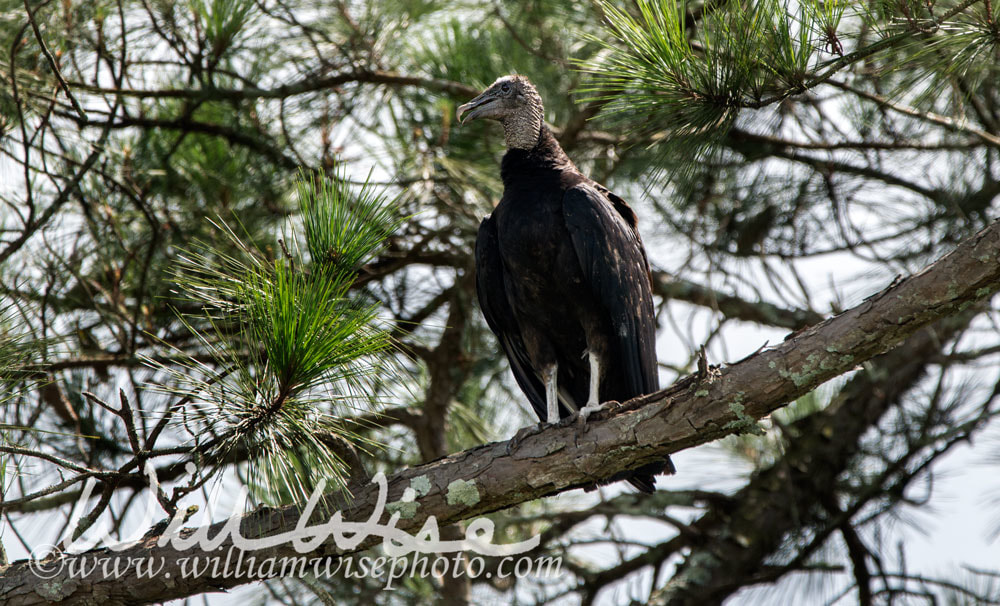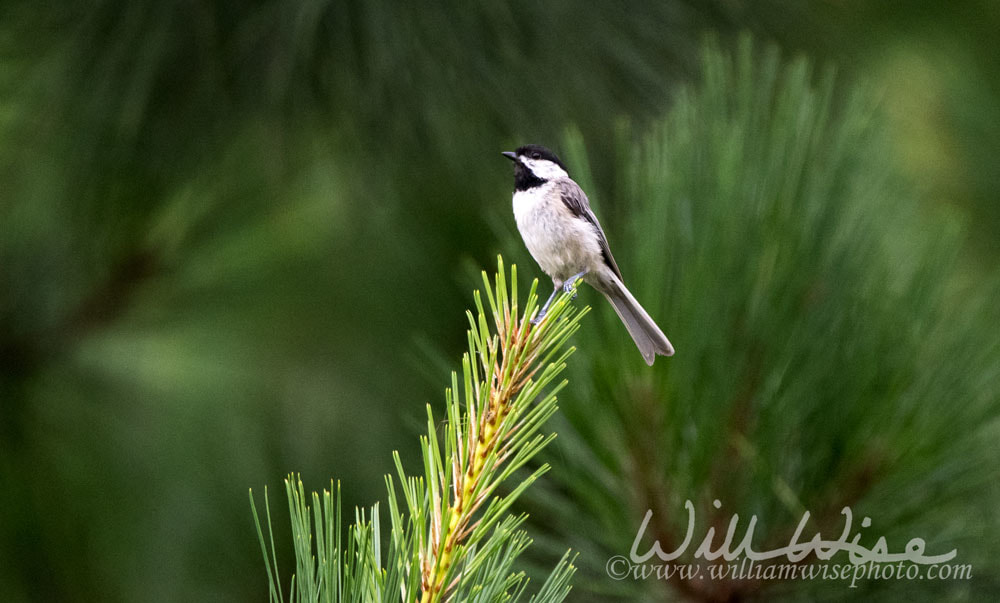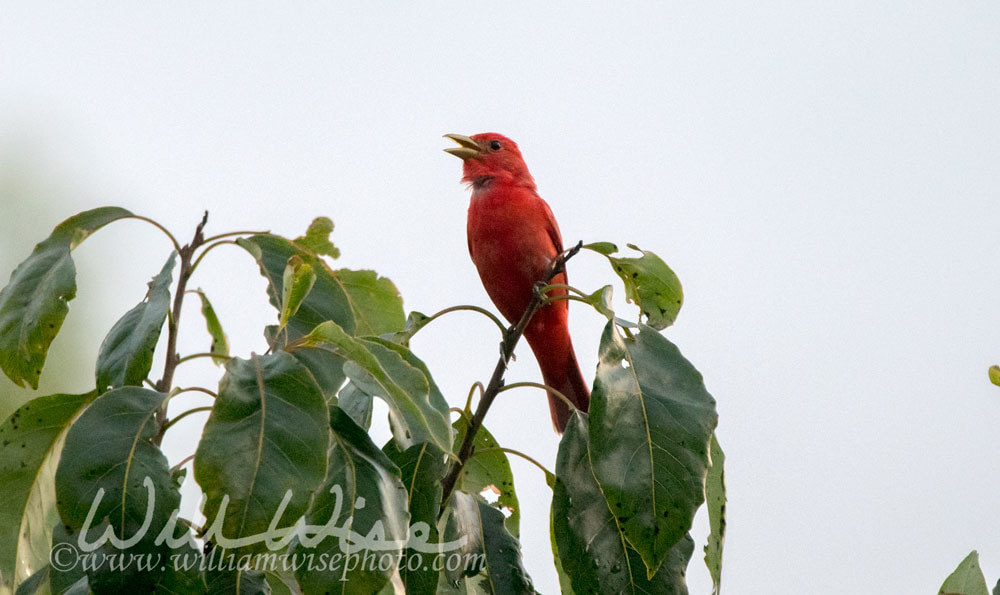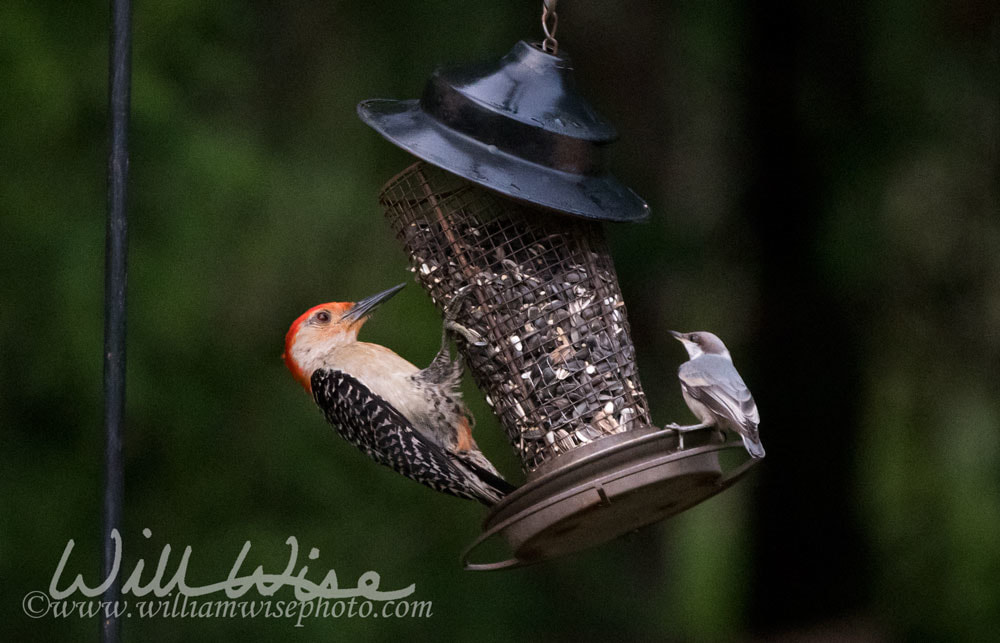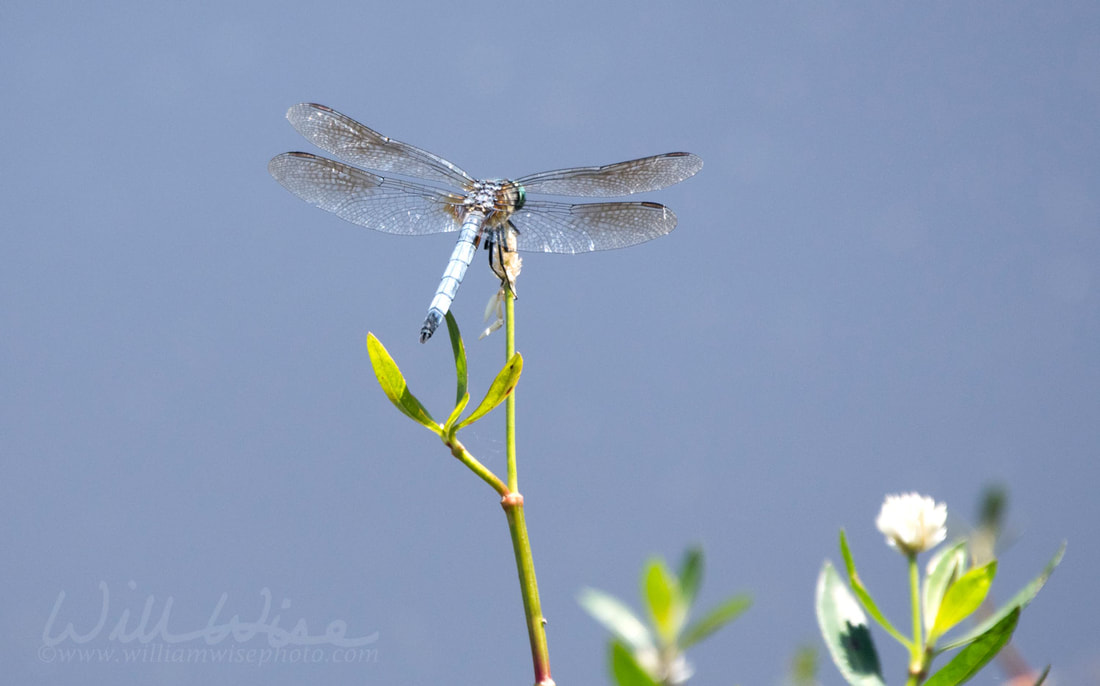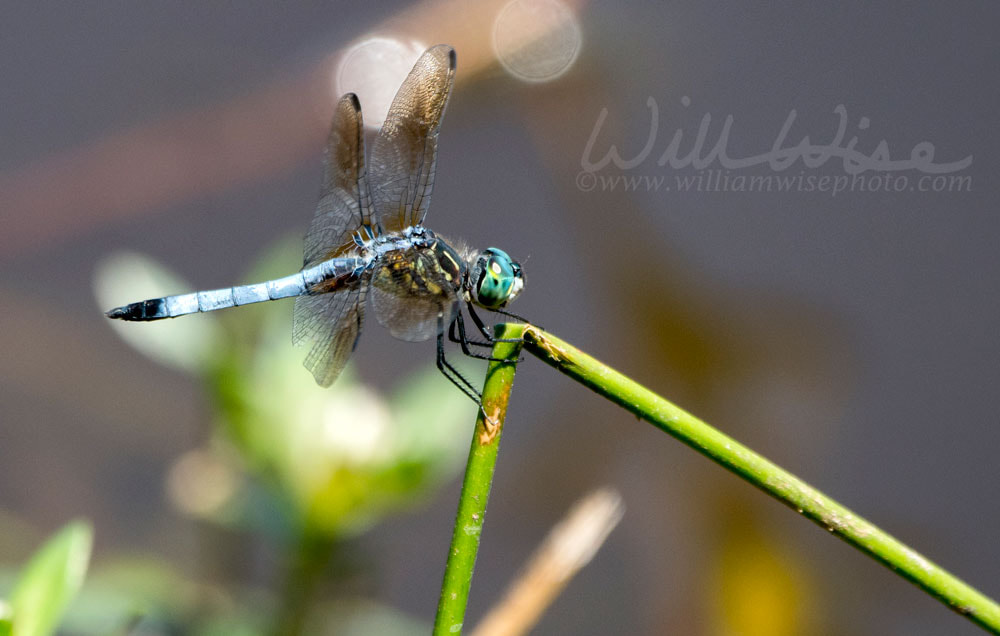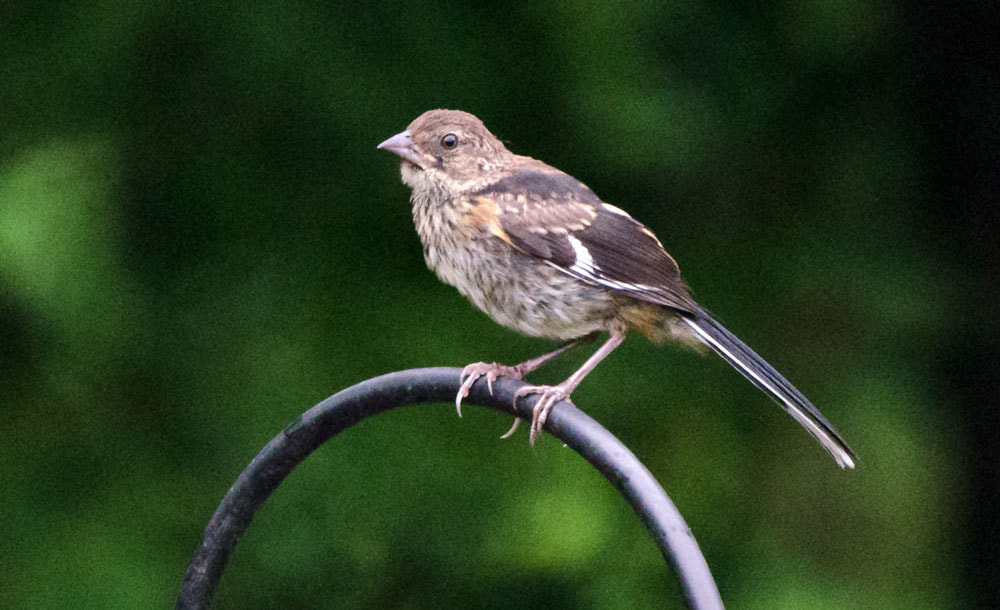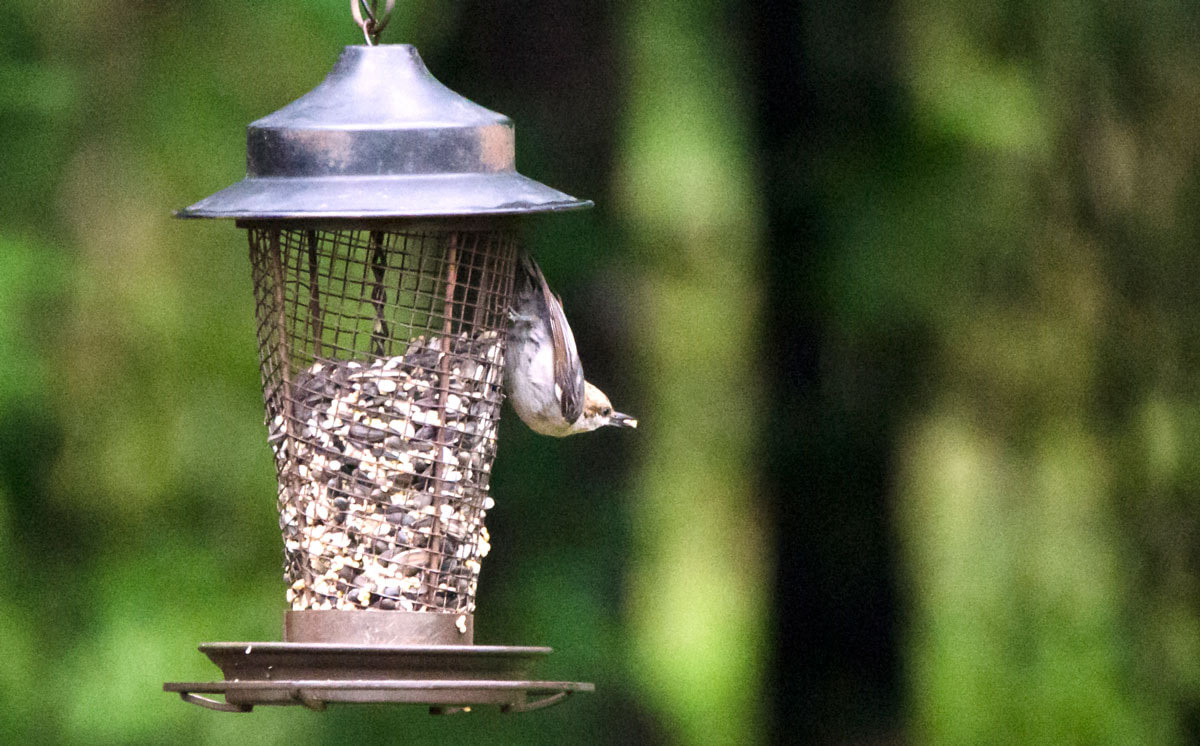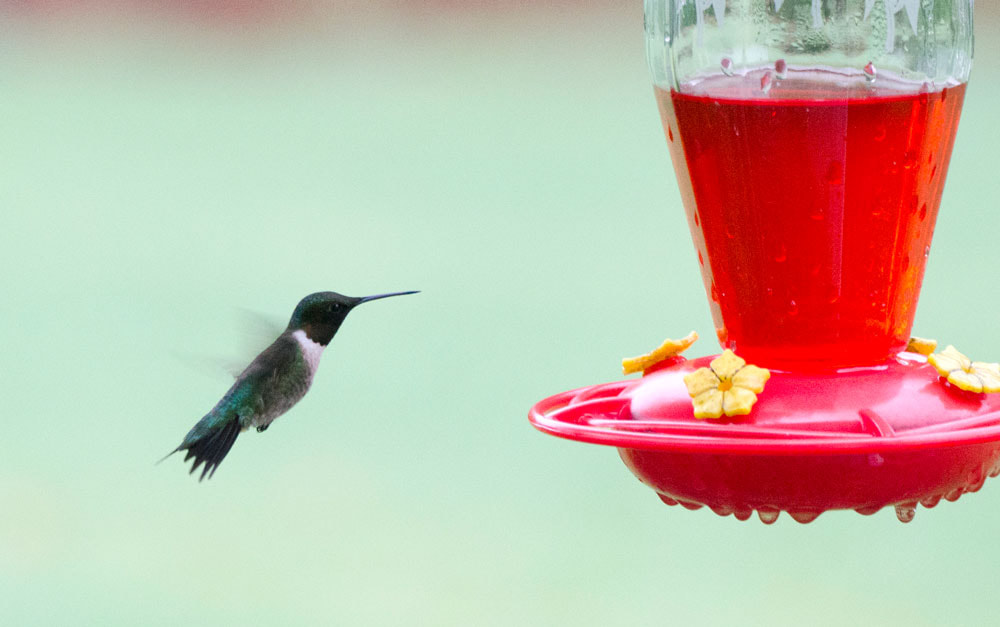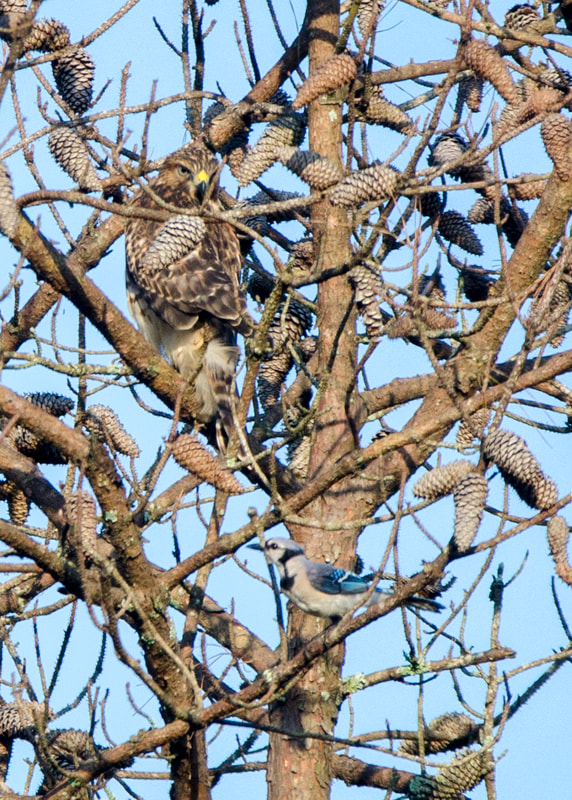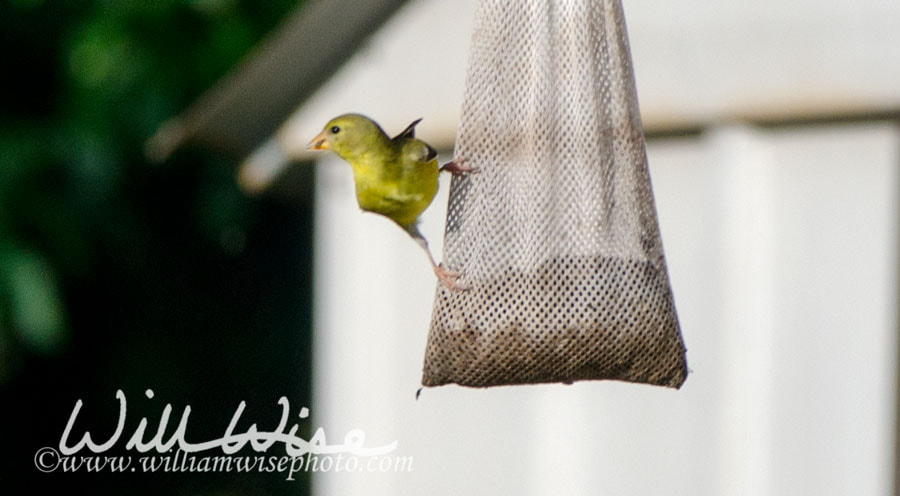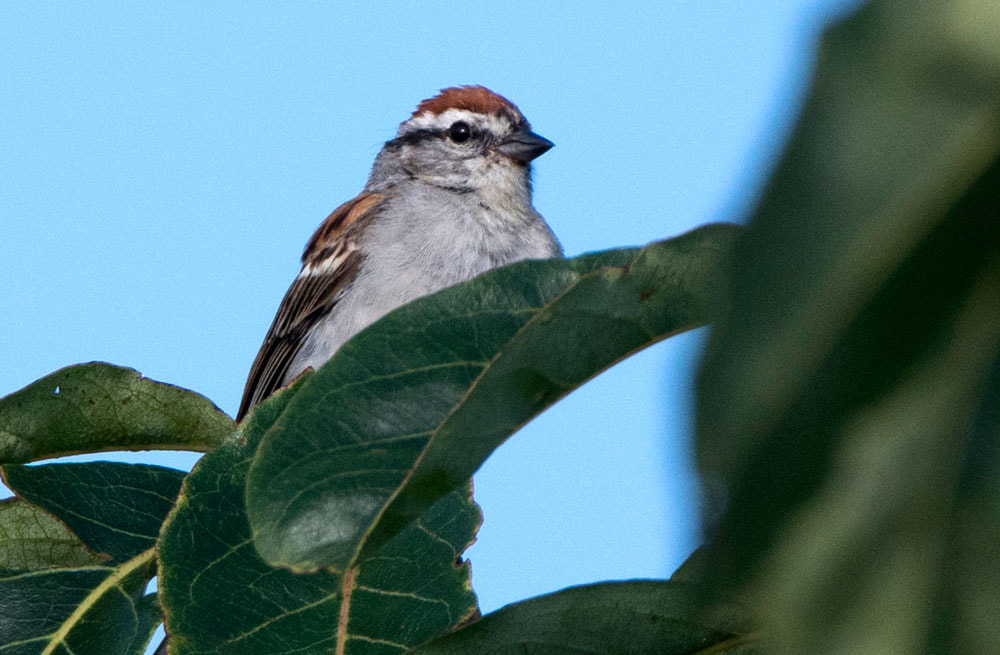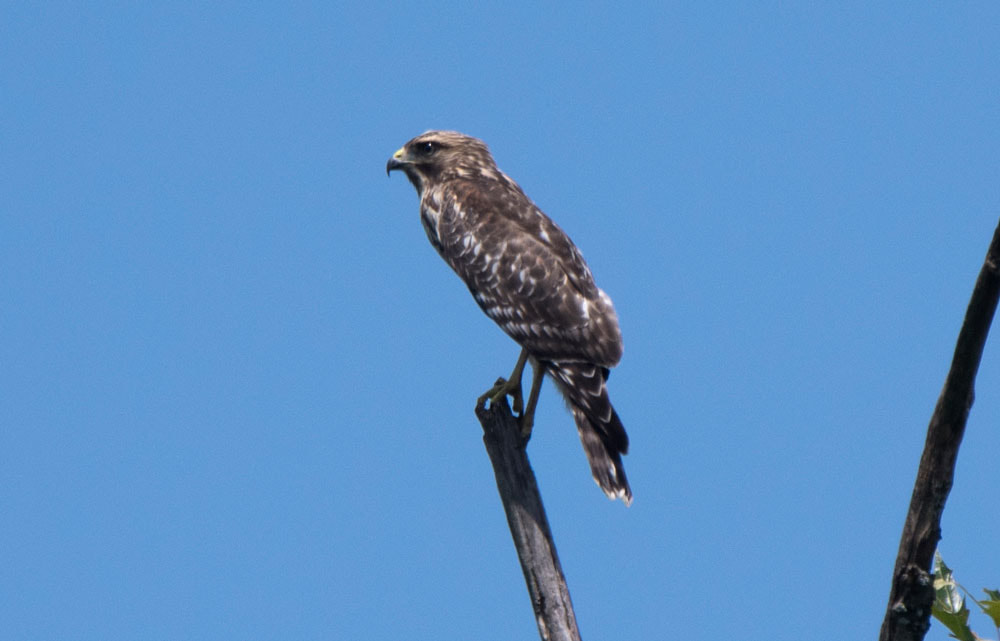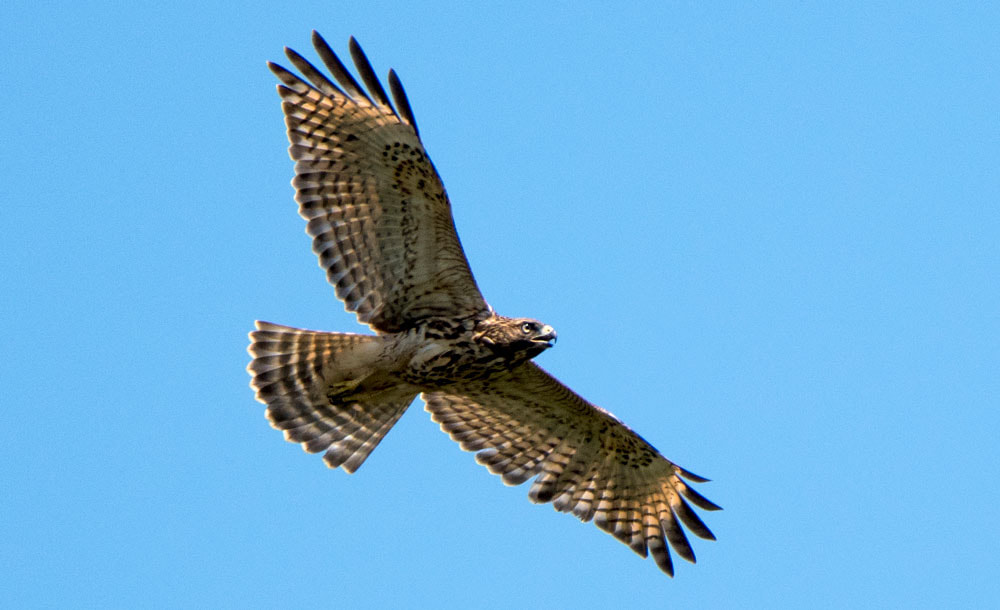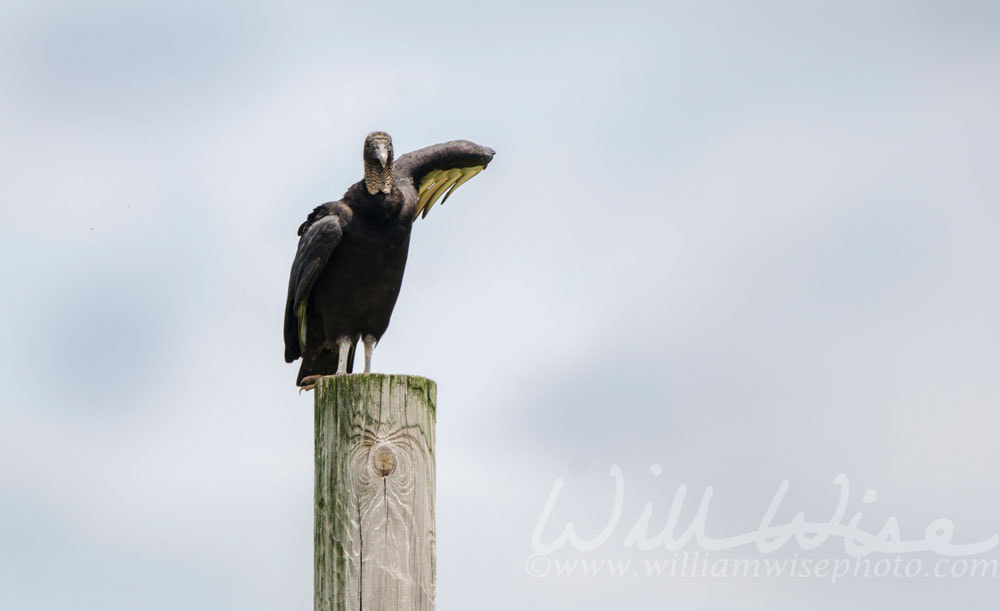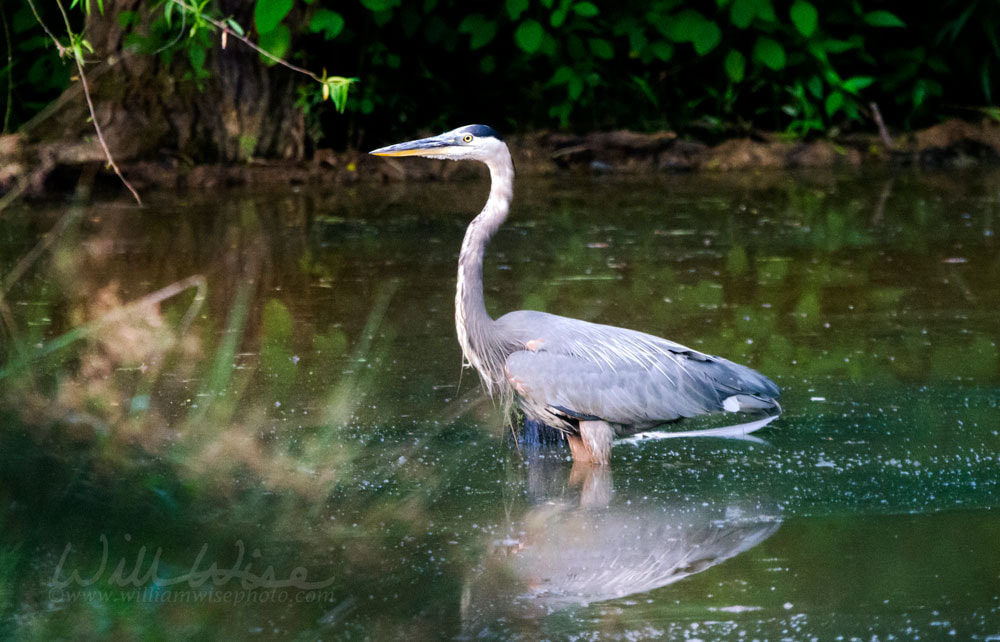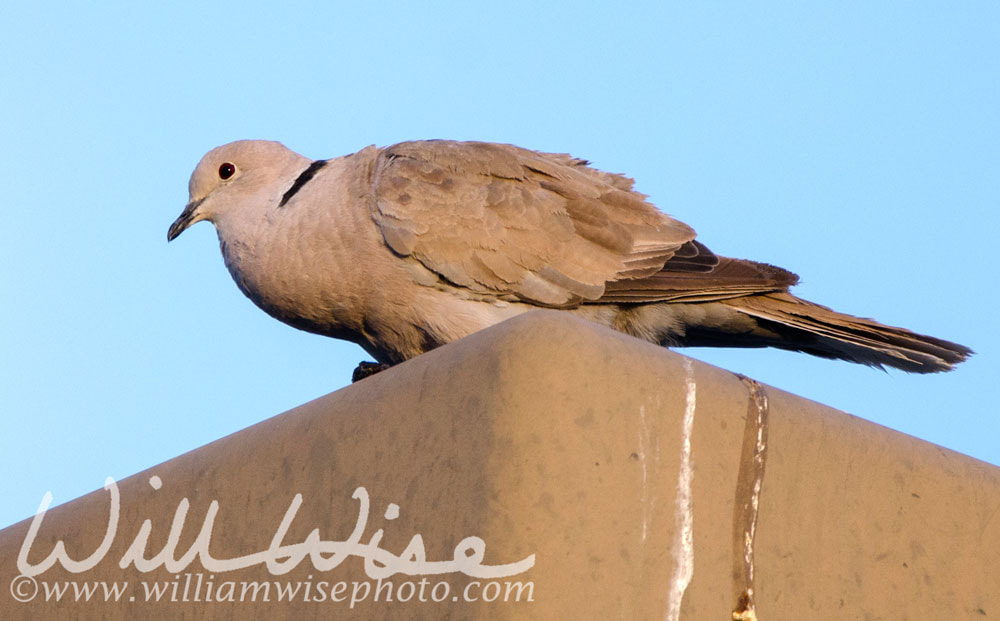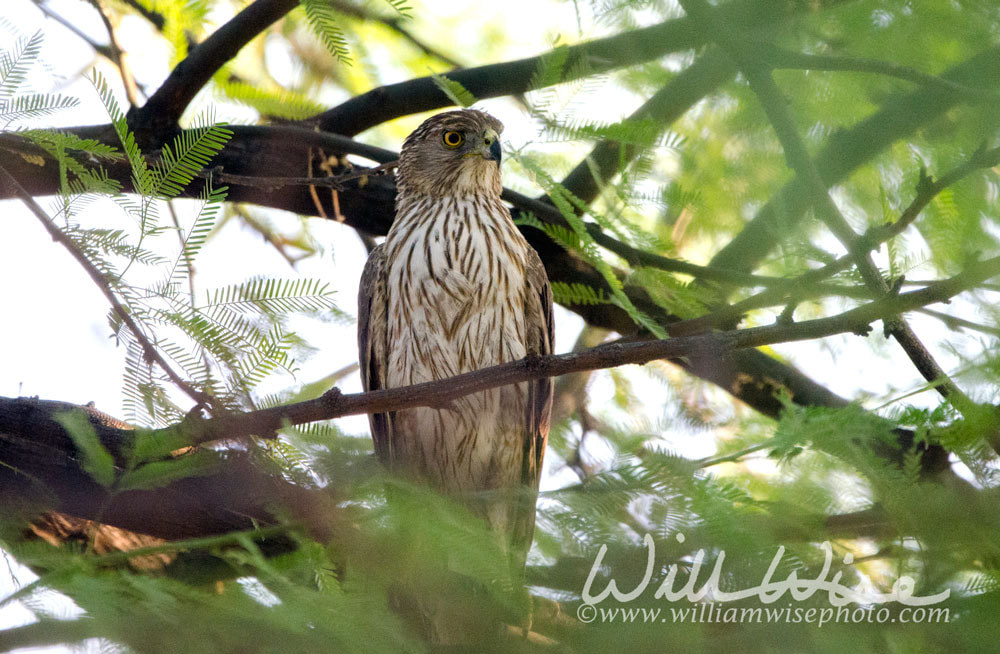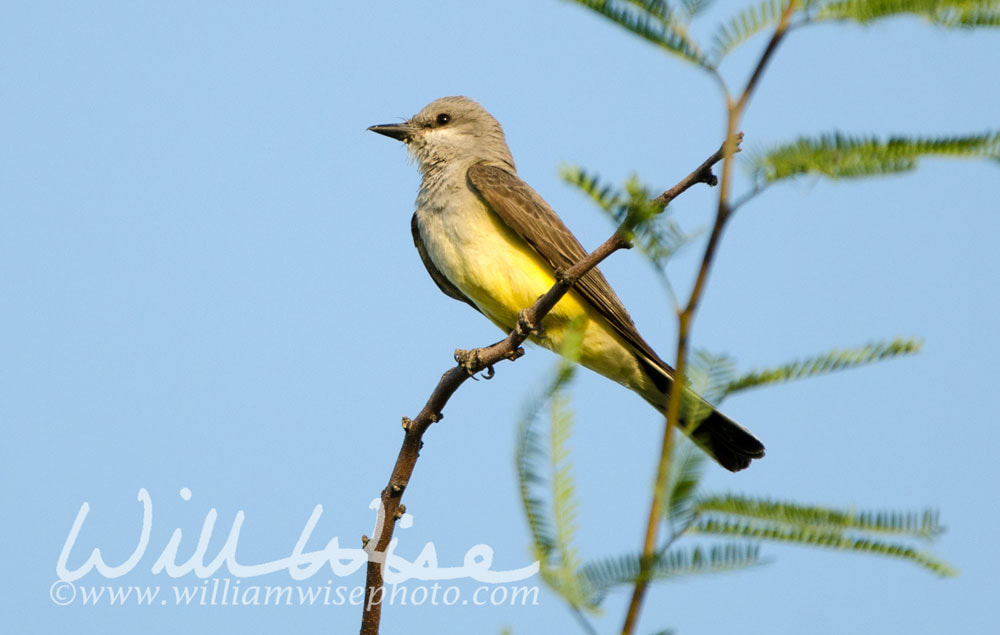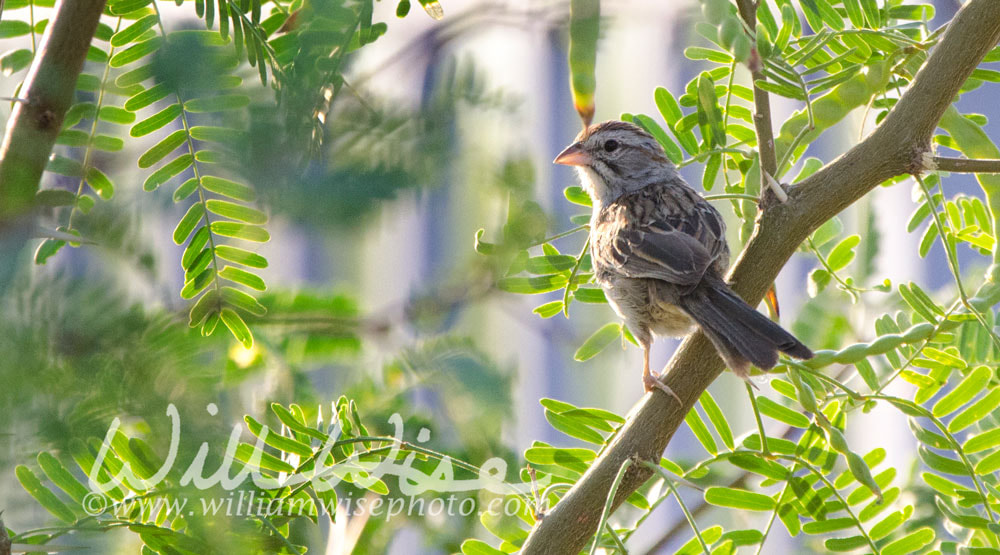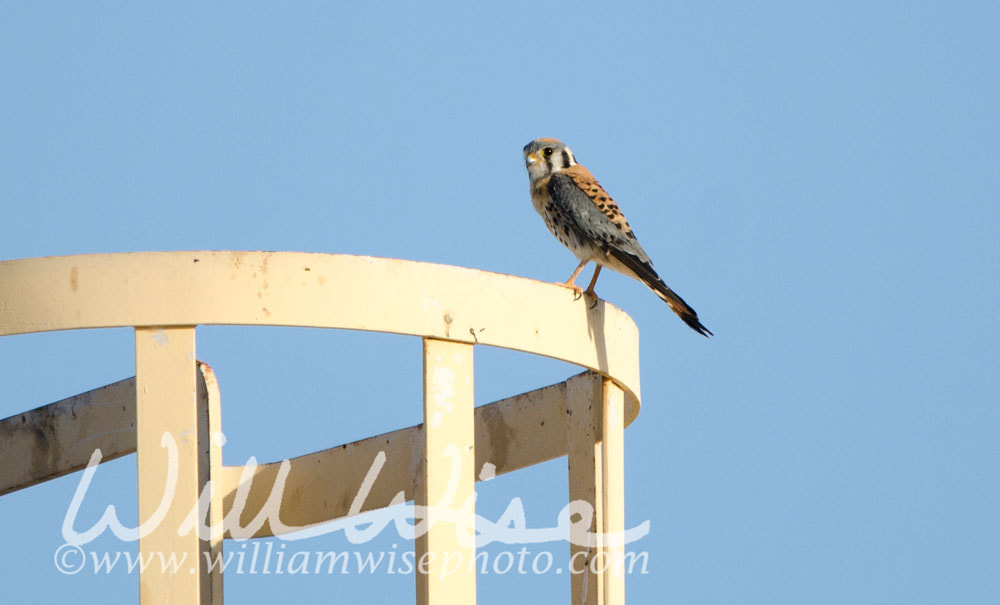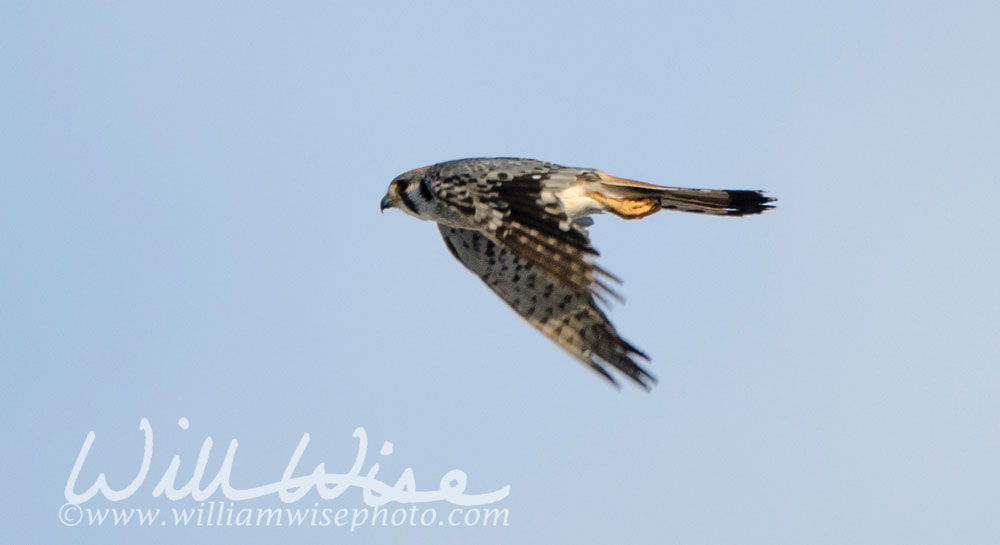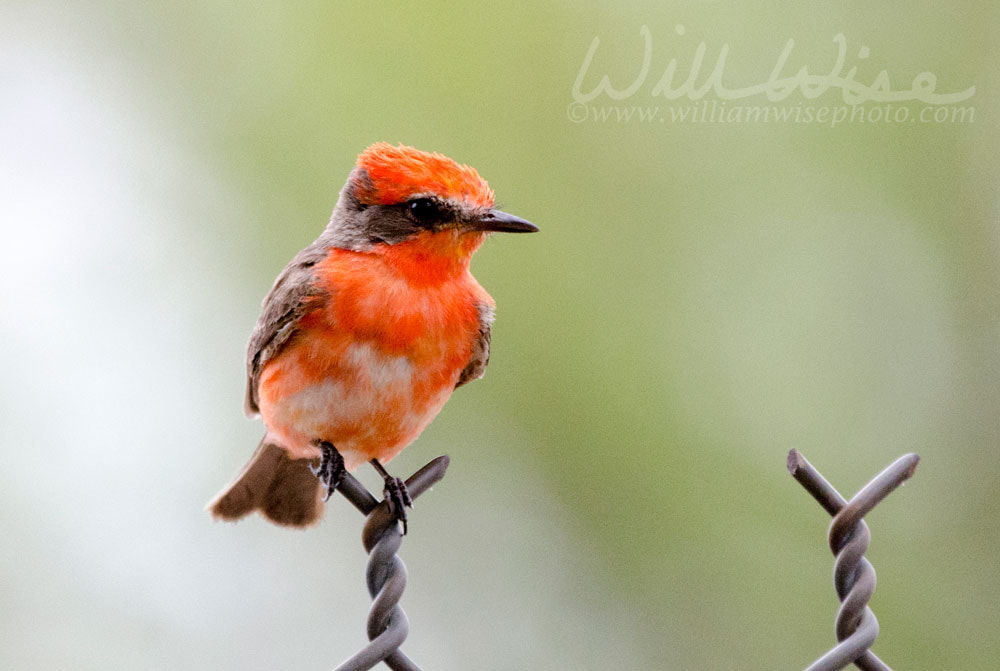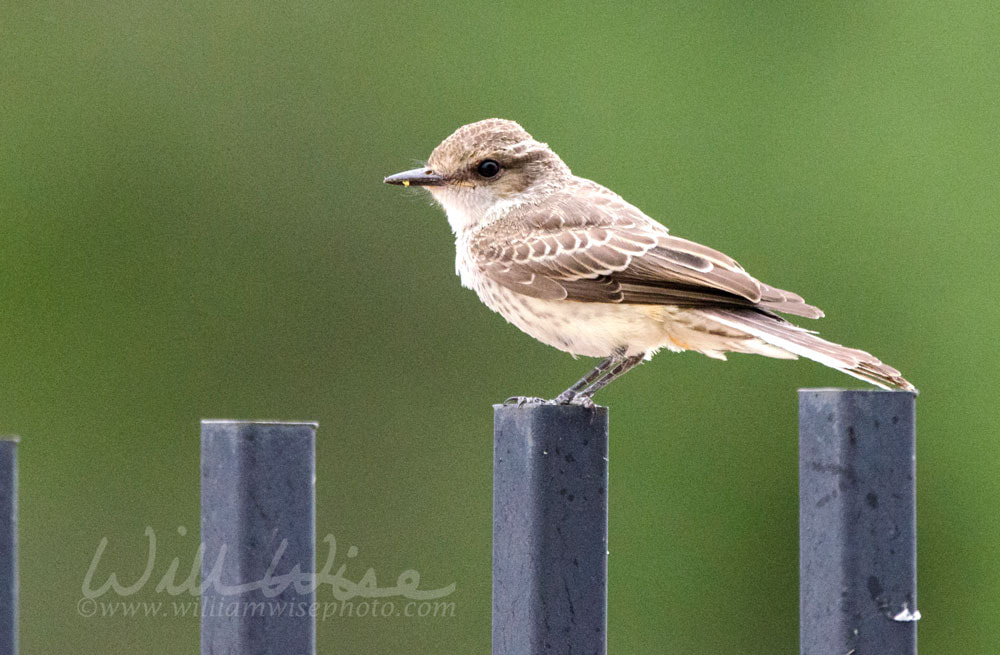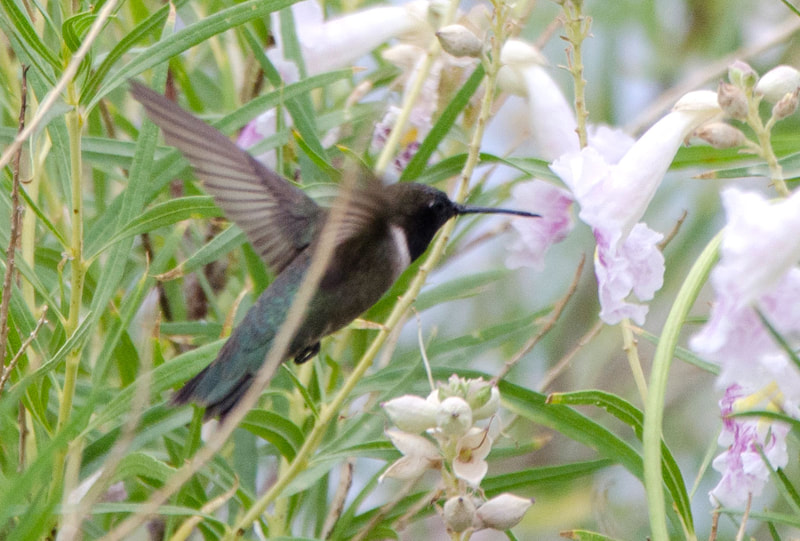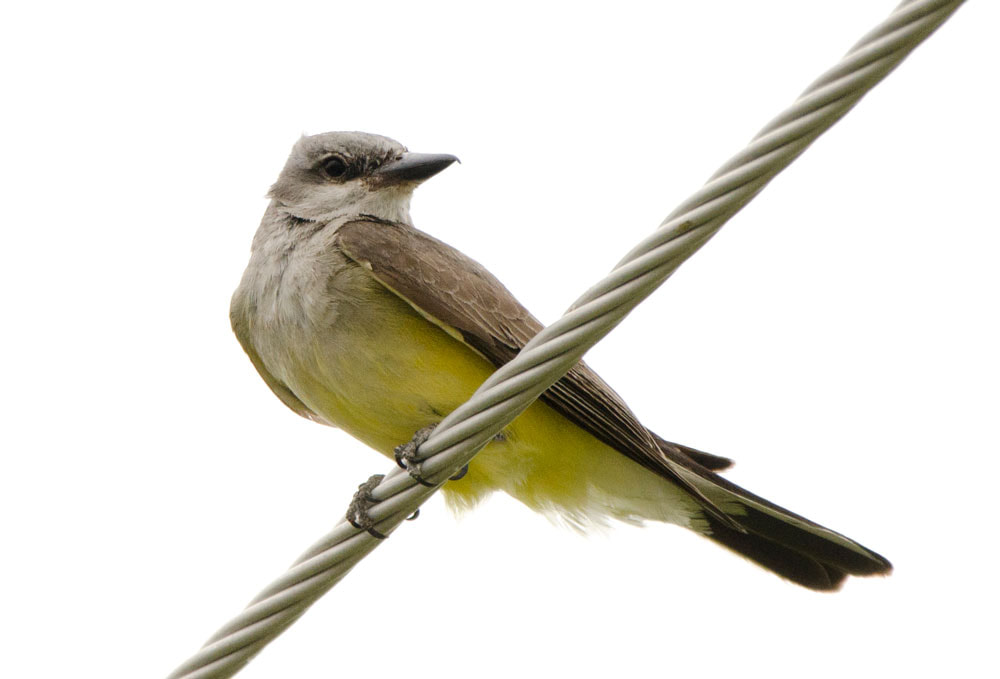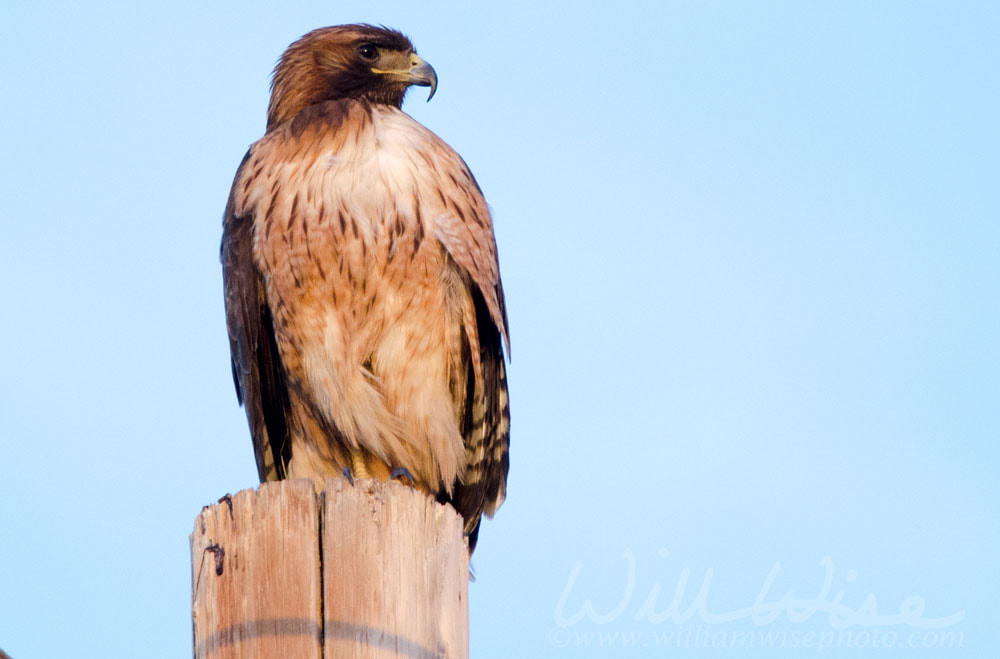Ezekiel 17:23 Birds of every kind will nest in it; they will find shelter in the shade... Tuesday, 7:54 AM - The birding books will tell you that to attract Eastern Bluebirds you must have the exact right size box, with the exact right size opening, and with the exact tilt of the roof. Well, it seems this pair must not be familiar with all of those requirements. For the second time this season, they have decided to raise young in a duck nest box that, by all the literature, is too large for Eastern Bluebirds, with too big an opening for Eastern Bluebirds, and wasn’t cleaned out annually as required by Eastern Bluebirds! As I sat and watched, the parents made repeated runs to the nest box to feed their young. Each time they entered the box, or left the area for more food, I scooted a bit closer and squatted on the ground. Eventually, I was close enough for some decent shots showing a fresh, green grasshopper in momma’s beak. Forecast: a 30 percent chance of showers and thunderstorms. Partly sunny, with a high near 91. East wind around 5 mph.
0 Comments
Isaiah 48:6 I have shewed thee new things from this time, even hidden things, and thou didst not know them. Tuesday, 9:14 PM - This evening I scored a new Life Bird photograph! No, I didn’t travel to Mississippi to capture this newbie, but Mississippi came to me! Just before a big evening thunderstorm blew in, I spotted a pale gray raptor circling waaaayyyy high up, just under the gray clouds. Even with the 600mm lens and 1.5x teleconverter, I could barely see more than a speck. But digital technology being what it is, I captured my first shot of a Mississippi Kite. Although not a great photograph, still a thrill to photograph something new to me nonetheless! Sunrise Today: 6:26 am Ecclesiastes 10:20 Do not revile the king even in your thoughts, or curse the rich in your bedroom, because a bird in the sky may carry your words, and a bird on the wing may report what you say. Saturday, 6:54 AM - Passing clouds through a mostly clear sky at sunrise. Nice to not have to go to work on a Monday morning (two doctor's appointments and going into Atlanta to the Peachtree Road Race expo!). Two Red-shouldered Hawks screaming back and forth in the neighborhood. So much so that someone actually posted on the neighborhood page wondering if there was something wrong with them! Today: A 30 percent chance of showers and thunderstorms, mainly after 11am. Otherwise, mostly cloudy, with a high near 88. Calm wind becoming southeast around 5 mph in the afternoon.  William Wise Photo Nature Notes is a wildlife, birding and nature photography blog documenting the beauty, design and wonder of God’s creation. -- "What a wildly wonderful world, God! You made it all, with Wisdom at Your side, made earth overflow with your wonderful creations." Psalms 104 The Message 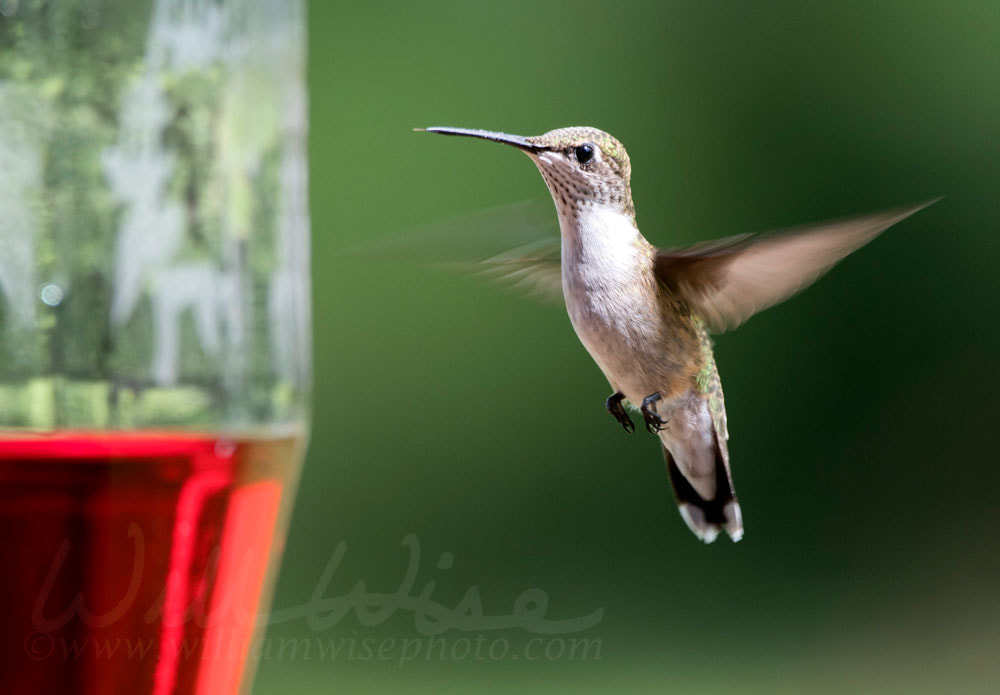 Tiny female Ruby-throated Humminbird bird perched on red nectar feeder. Summer wildlife and birding photography in Athens, GA. The ruby-throated hummingbird Archilochus colubris is a species of hummingbird that generally spends the winter in Central America, Mexico, and Florida, and migrates to Eastern North America for the summer to breed. It is by far the most common hummingbird seen east of the Mississippi River in North America. 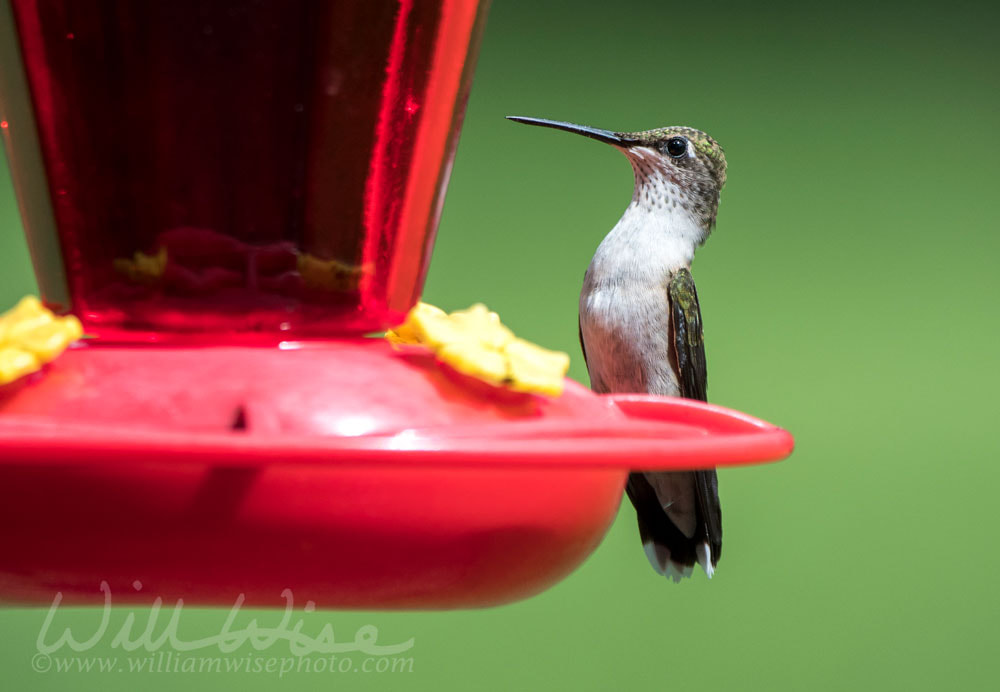 Tiny female Ruby-throated Humminbird bird perched on red nectar feeder. Summer wildlife and birding photography in Athens, GA. The ruby-throated hummingbird Archilochus colubris is a species of hummingbird that generally spends the winter in Central America, Mexico, and Florida, and migrates to Eastern North America for the summer to breed. It is by far the most common hummingbird seen east of the Mississippi River in North America.  Tiny female Ruby-throated Humminbird bird perched on red nectar feeder. Summer wildlife and birding photography in Athens, GA. The ruby-throated hummingbird Archilochus colubris is a species of hummingbird that generally spends the winter in Central America, Mexico, and Florida, and migrates to Eastern North America for the summer to breed. It is by far the most common hummingbird seen east of the Mississippi River in North America. And there was evening, and there was morning—the first day. Genesis 1:5 Sunday - At sunrise, a backyard Carolina Chickadee. My first photo of the morning. At sunset, a Summer Tanager. My last photo of the evening. Clarke County, Georgia  William Wise Photo Nature Notes is a wildlife, birding and nature photography blog documenting the beauty, design and wonder of God’s creation. -- "What a wildly wonderful world, God! You made it all, with Wisdom at Your side, made earth overflow with your wonderful creations." Psalms 104 The Message  Limenitis arthemis, the red-spotted purple or white admiral, is a North American butterfly species in the cosmopolitan genus Limenitis. Monroe, GA. Common near open water lakes, ponds, rivers and in wetlands over most of North America and Central America. Photographed in June, hot humid summer days.  William Wise Photo Nature Notes is a wildlife, birding and nature photography blog documenting the beauty, design and wonder of God’s creation. -- "What a wildly wonderful world, God! You made it all, with Wisdom at Your side, made earth overflow with your wonderful creations." Psalms 104 The Message 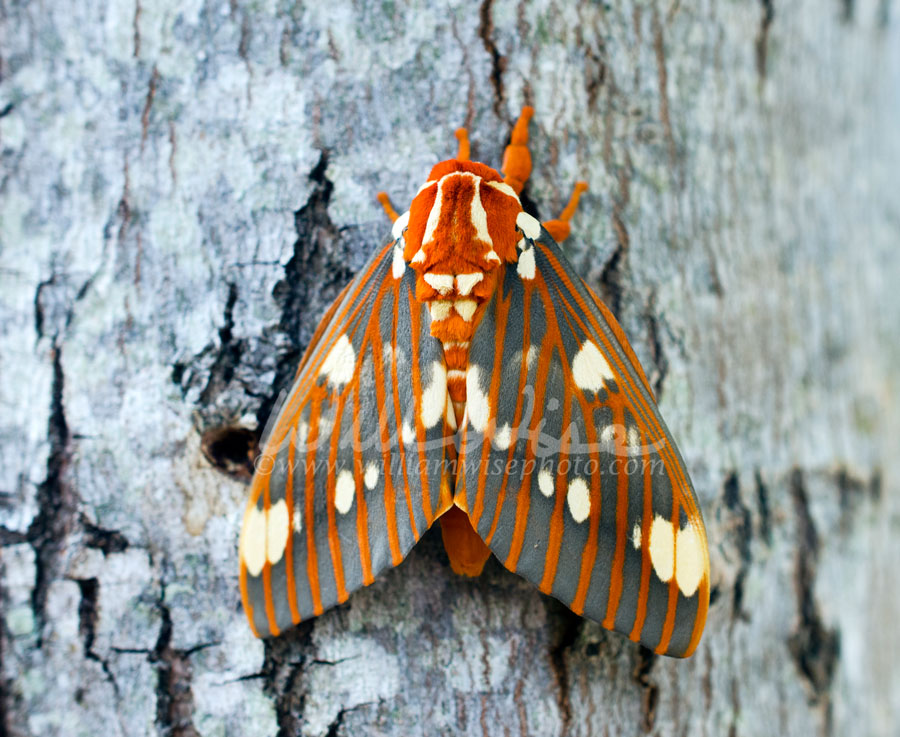 Regal Moth, Citheronia regalis, on tree bark. The regal moth, also called the royal walnut moth, is a North American moth in the family Saturniidae. The caterpillars are called hickory horned devils. The regal moth is found throughout the deciduous forest areas of the eastern United States from New Jersey to Missouri and southward to eastern Texas and central Florida. Photographed in Athens, Clarke County, GA. June 23, 2018. "Mr. Wise!!! Mr. Wise!!! Come outside and see this cool bug!" All the kids in church know that "Mr. Wise" loves this kind of stuff. So they all ran enthusastically into the church to bring me outside to see this Regal Moth clinging to the bark in the shade of a tree in the parking lot. - Partly sunny, with a high near 90. West wind 5 to 10 mph, with gusts as high as 15 mph. Chance of precipitation is 30%.  William Wise Photo Nature Notes is a wildlife, birding and nature photography blog documenting the beauty, design and wonder of God’s creation. -- "What a wildly wonderful world, God! You made it all, with Wisdom at Your side, made earth overflow with your wonderful creations." Psalms 104 The Message 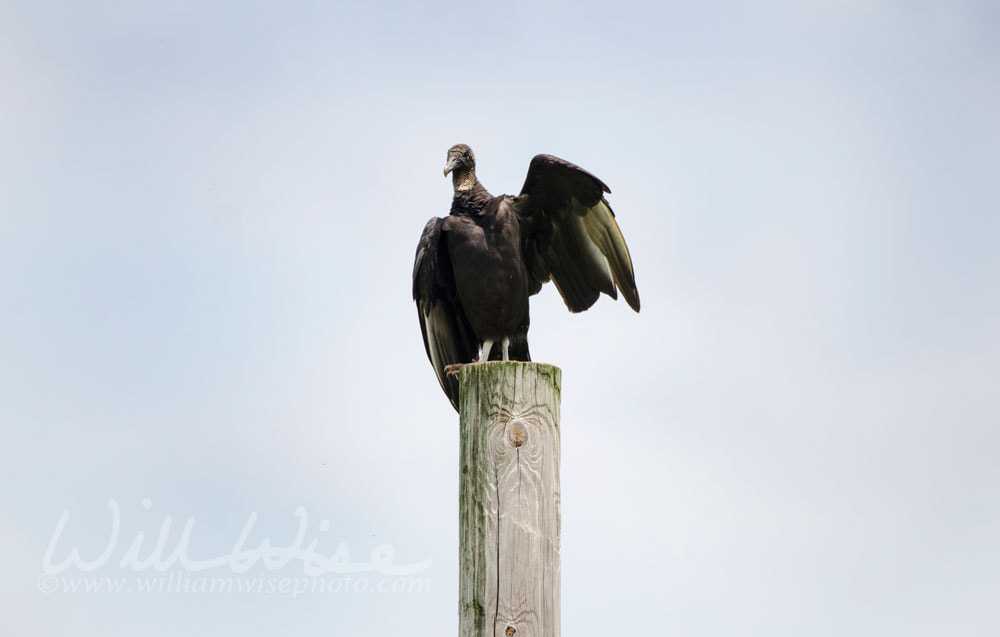 Black Vulture bird, Coragyps atratus, with wing extended perched on a utility pole on Danielsville Highway in Athens, GA. Photographed June 23, 2018. The black vulture, also known as the American black vulture, is a bird in the New World vulture family whose range extends from the southeastern United States to Central Chile and Uruguay in South America.  William Wise Photo Nature Notes is a wildlife, birding and nature photography blog documenting the beauty, design and wonder of God’s creation. -- "What a wildly wonderful world, God! You made it all, with Wisdom at Your side, made earth overflow with your wonderful creations." Psalms 104 The Message  Small House Finch songbird, Haemorhous mexicanus, perched in Mimosa tree. Summer wildlife and birding photography in Monroe, GA. The house finch is a bird in the finch family Fringillidae. It is native to western North America, and has been introduced to the eastern half of the continent and Hawaii. June 28, 2018.  Male and female pale of bright gold American Goldfinch songbirds. Summer wildlife and birding photography in Monroe, GA. The American goldfinch Spinus tristis is a small North American bird in the finch family. It is migratory, ranging from mid-Alberta to North Carolina during the breeding season, and from just south of the Canada–United States border to Mexico during the winter. June 28, 2018.  William Wise Photo Nature Notes is a wildlife, birding and nature photography blog documenting the beauty, design and wonder of God’s creation. -- "What a wildly wonderful world, God! You made it all, with Wisdom at Your side, made earth overflow with your wonderful creations." Psalms 104 The Message 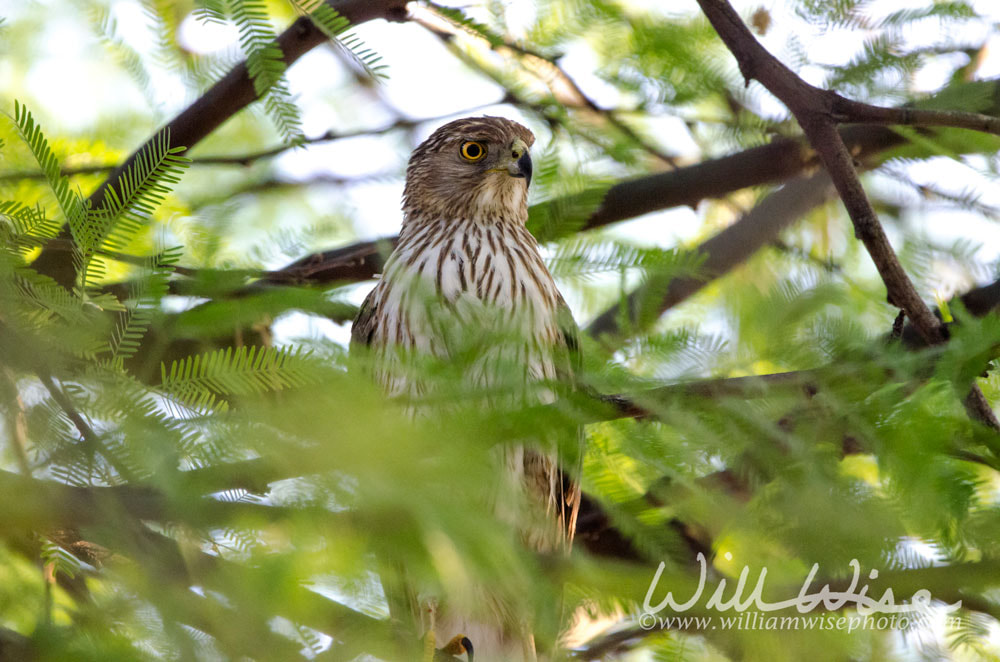 Cooper`s Hawk, Accipiter cooperii, a medium-sized hawk native to the North American continent and found from Southern Canada to Northern Mexico. As in many birds of prey, the male is smaller than the female. Photographed in the arid scrub desert of Tucson in southeastern Arizona, USA. Sonoran desert and Rincon Mountain landscapes. Each morning at 5:30 AM during my weeklong stay in Tucson for our International Bible Conference, I took a walk down Medina Rd near the Tucson airport. Several desert species of birds inhabited the scrub within the vacant industrial lots. Pima County, Arizona. Thursday, June 14, 2018. 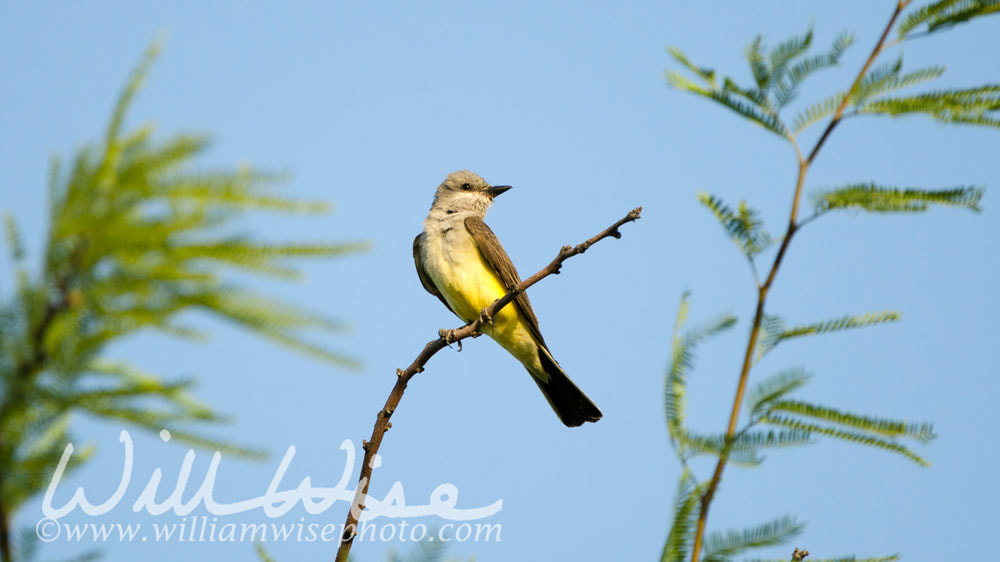 The western kingbird, Tyrannus verticalis, is a large tyrant flycatcher. The Western Kingbird is very similar to and easily confused with Cassin`s kingbird, Couch`s kingbird and the tropical kingbird. Photographed in the arid scrub desert of Tucson in southeastern Arizona, USA. Sonoran desert and Rincon Mountain landscapes. 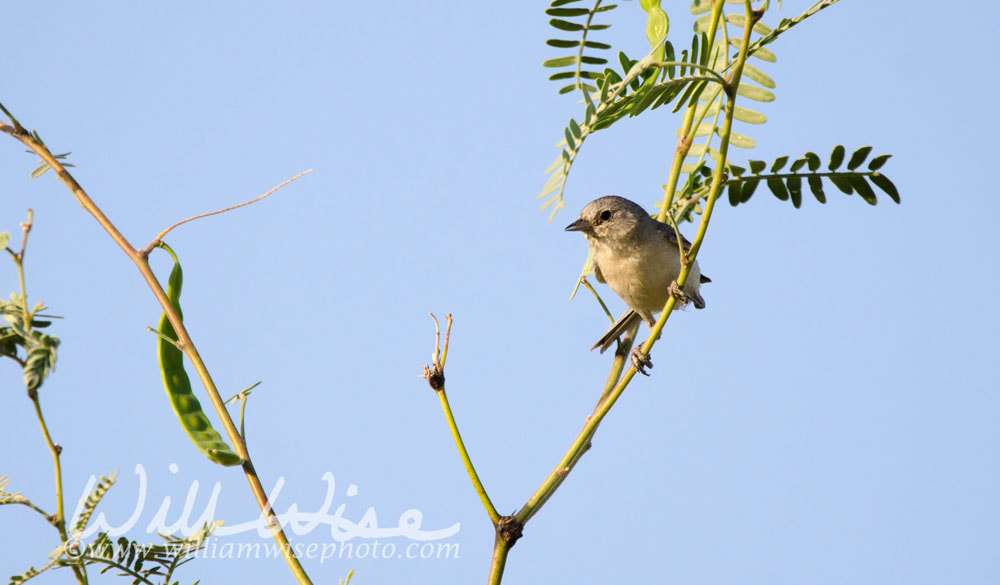 Lucy`s Warbler songbird, Oreothlypis luciae, range includes southwestern United States and northwestern Mexico. One of the smallest warblers, the Lucy`s Warbler is a bird of the hot Sonoran desert. Photographed in the arid scrub desert of Tucson in southeastern Arizona, USA. Sonoran desert and Rincon Mountain landscapes. 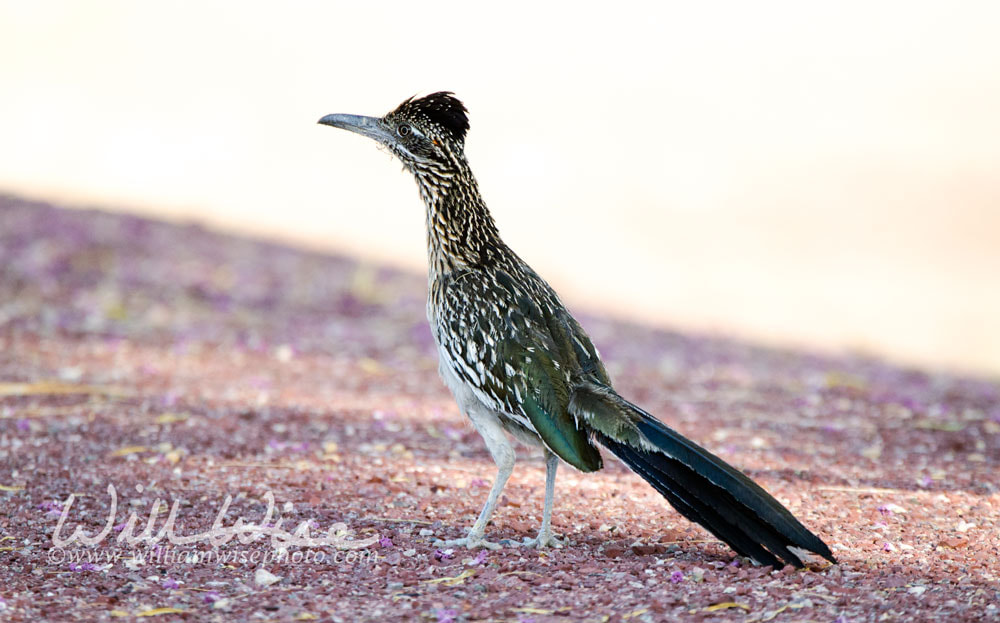 The greater roadrunner, Geococcyx californianus, is a long-legged bird in the cuckoo family, Cuculidae, from Southwestern United States and Mexico. The Latin name means `Californian earth-cuckoo`. Photographed in the arid scrub desert of Tucson in southeastern Arizona, USA. Sonoran desert and Rincon Mountain landscapes. FRIDAY, JUNE 15- Mostly cloudy, with a high near 92. 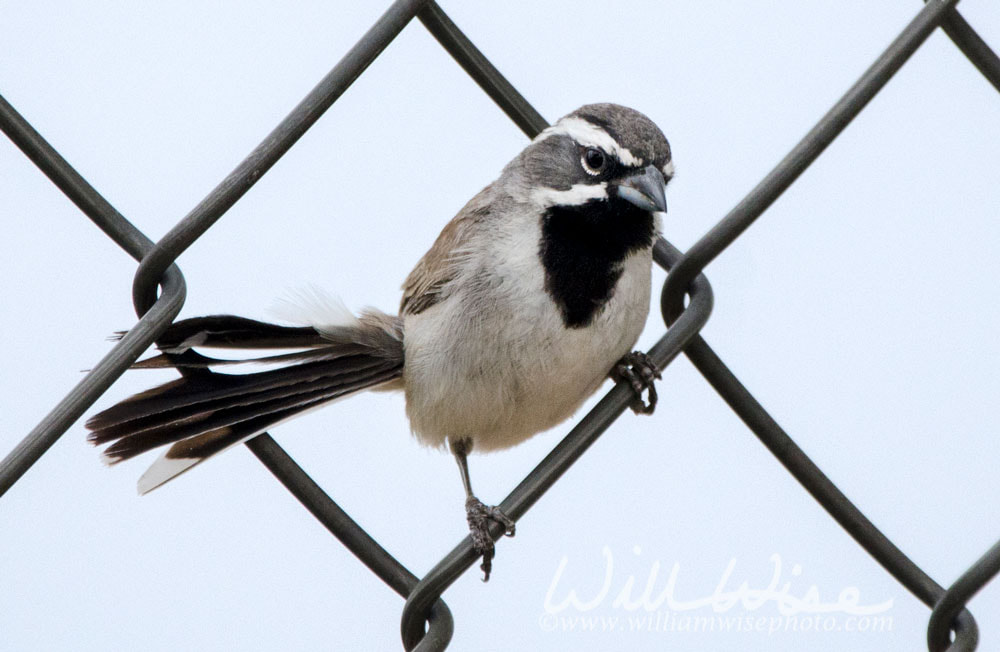 Black-throated Sparrow, Amphispiza bilineata. The black-throated sparrow is a small American sparrow primarily found in the southwestern United States and Mexico. It is sometimes referred to as the desert sparrow, due to its preferred habitat of arid desert hillsides and scrub. Photographed in the arid scrub desert of Tucson in southeastern Arizona, USA. 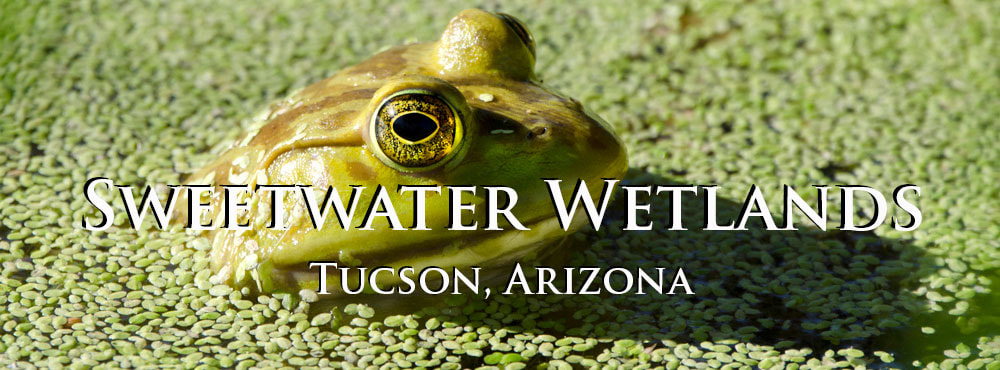 William Wise Photo Nature Notes is a wildlife, birding and nature photography blog documenting the beauty, design and wonder of God’s creation. -- "What a wildly wonderful world, God! You made it all, with Wisdom at Your side, made earth overflow with your wonderful creations." Psalms 104 The Message  The Abert`s towhee, Pipilo aberti, is a bird of the family Passerellidae, native to a small range in southwestern North America, generally the lower Colorado River and Gila River watersheds, nearly endemic to Arizona. Photographed in Sweetwater Wetlands, a reclaimed wastewater treatment facility managed for wildlife habitat in Tucson, Arizona. It is a stream riparian oasis in the southwestern desert. Duckweed filled ponds are surrounded by Cottonwood, Willow, Saltbush, Bulrush, Cattail, Mesquite and Wolfberry. Photographed in June 2018. Thursday, June 14 - Having some time in the afternoon, I made another visit to Sweetwater in the heat of the day. Although it was 106 degrees, the vegetation and the pools at this oasis kept it feeling cool in the shade. Most of the birds were hiding in the shady vegetation.  The Abert`s towhee, Pipilo aberti, is a bird of the family Passerellidae, native to a small range in southwestern North America, generally the lower Colorado River and Gila River watersheds, nearly endemic to Arizona. Photographed in Sweetwater Wetlands, a reclaimed wastewater treatment facility managed for wildlife habitat in Tucson, Arizona.  Neotropic Cormorant, Phalacrocorax brasilianus, on driftwood in a pond. A bird of the tropical waterways of Central and South America, the Neotropic Cormorant reaches the upper limits of its range in Texas and occasionally, the Great Plains. Although it superficially resembles North America`s other freshwater cormorant, the Double-crested Cormorant, the Neotropic Cormorant stands apart in various aspects of behavior, as well as range. Sweetwater Wetlands is a reclaimed wastewater treatment facility managed for wildlife habitat in Tucson, Arizona.  Neotropic Cormorant, Phalacrocorax brasilianus, on driftwood in a pond. A bird of the tropical waterways of Central and South America, the Neotropic Cormorant reaches the upper limits of its range in Texas and occasionally, the Great Plains. Although it superficially resembles North America`s other freshwater cormorant, the Double-crested Cormorant, the Neotropic Cormorant stands apart in various aspects of behavior, as well as range. Sweetwater Wetlands is a reclaimed wastewater treatment facility managed for wildlife habitat in Tucson, Arizona.  William Wise Photo Nature Notes is a wildlife, birding and nature photography blog documenting the beauty, design and wonder of God’s creation. -- "What a wildly wonderful world, God! You made it all, with Wisdom at Your side, made earth overflow with your wonderful creations." Psalms 104 The Message Each morning at 5:30 AM during my weeklong stay in Tucson for our International Bible Conference, I took a walk down Medina Rd near the Tucson airport. Several desert species of birds inhabited the scrub within the vacant industrial lots. Pima County, Arizona; Wednesday, June 13, 2018.  Harvester ants crawling into a hole in the dirt. Aphaenogaster are called `harvester ants` because they gather and eat seeds. Aphaenogaster are most common in less disturbed areas outside the city of Tucson, but they also occur within the city itself. They tolerate high temperatures and can be found foraging on very hot days. Look for single workers collecting seeds, or for their nest entrances, which are large holes in the ground surrounded by pebbles. These ants can bite, but do not sting.  William Wise Photo Nature Notes is a wildlife, birding and nature photography blog documenting the beauty, design and wonder of God’s creation. -- "What a wildly wonderful world, God! You made it all, with Wisdom at Your side, made earth overflow with your wonderful creations." Psalms 104 The Message Each morning at 5:30 AM during my weeklong stay in Tucson for our International Bible Conference, I took a walk down Medina Rd near the Tucson airport. Several species of desert birds inhabited the scrub even within these urban, vacant industrial lots.  The greater roadrunner, Geococcyx californianus, is a long-legged bird in the cuckoo family, Cuculidae, from Southwestern United States and Mexico. The Latin name means `Californian earth-cuckoo`. Photographed in Sweetwater Wetlands, a reclaimed wastewater treatment facility managed for wildlife habitat in Tucson, Arizona. It is a stream riparian oasis in the southwestern desert. Duckweed filled ponds are surrounded by Cottonwood, Willow, Saltbush, Bulrush, Cattail, Mesquite and Wolfberry. Photographed in June 2018.  William Wise Photo Nature Notes is a wildlife, birding and nature photography blog documenting the beauty, design and wonder of God’s creation. -- "What a wildly wonderful world, God! You made it all, with Wisdom at Your side, made earth overflow with your wonderful creations." Psalms 104 The Message 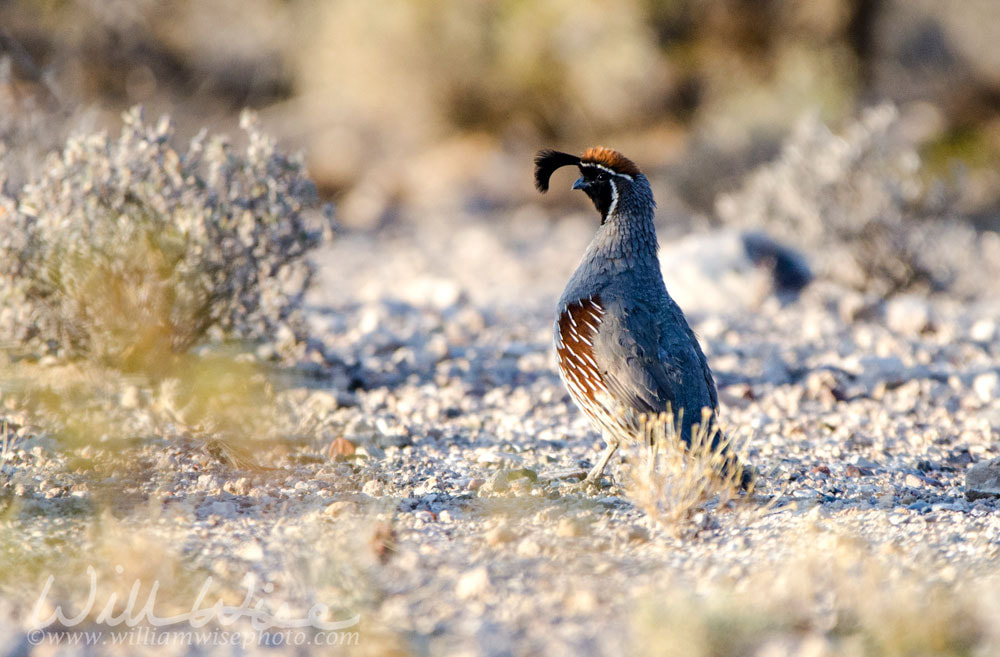 The Gambel`s quail, Callipepla gambelii, is a small ground-dwelling bird in the desert regions of Arizona, California, Colorado, New Mexico, Nevada, Utah, Texas, and Sonora. Photographed in the arid scrub Desert of Tucson in Pima County in southeastern Arizona, USA. Sonoran desert and Rincon Mountain landscapes. Each morning at 5:30 AM during my weeklong stay in Tucson for our International Bible Conference, I took a walk down Medina Rd near the Tucson airport. Several desert species of birds inhabited the scrub within the vacant industrial lots. Pima County, Arizona; Tuesday, June 12, 2018. 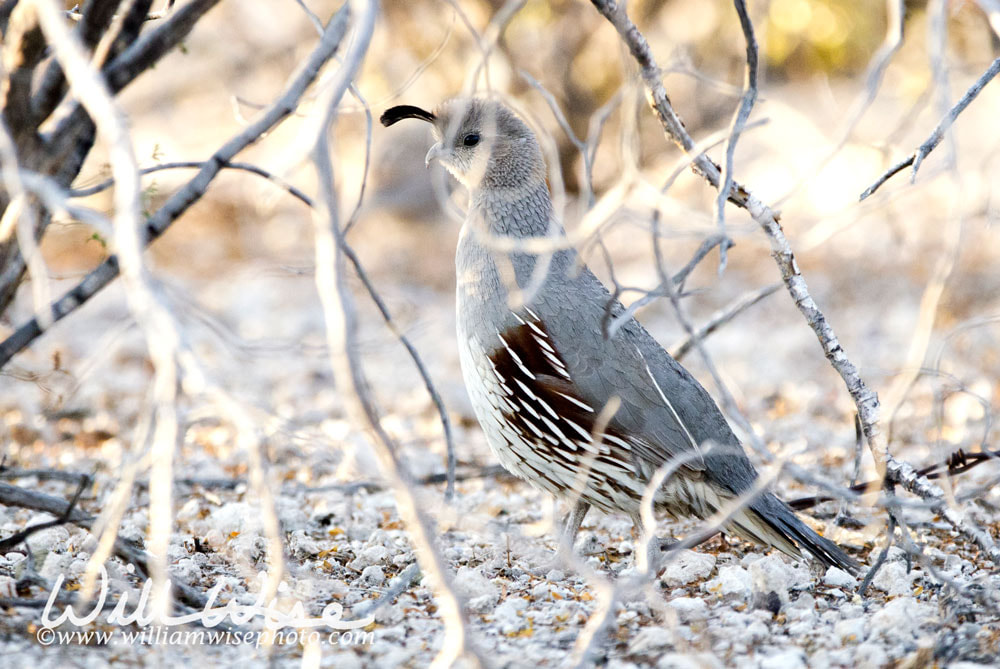 The Gambel`s quail, Callipepla gambelii, is a small ground-dwelling bird in the desert regions of Arizona, California, Colorado, New Mexico, Nevada, Utah, Texas, and Sonora. Photographed in the arid scrub Desert of Tucson in Pima County in southeastern Arizona, USA. Sonoran desert and Rincon Mountain landscapes. 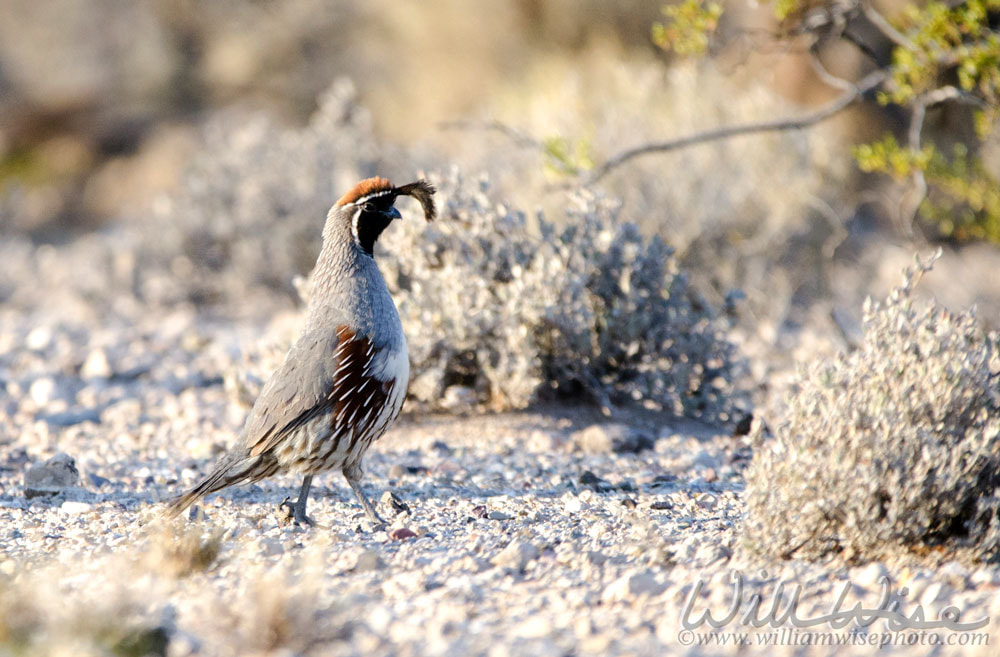 The Gambel`s quail, Callipepla gambelii, is a small ground-dwelling bird in the desert regions of Arizona, California, Colorado, New Mexico, Nevada, Utah, Texas, and Sonora. Photographed in the arid scrub Desert of Tucson in Pima County in southeastern Arizona, USA. Sonoran desert and Rincon Mountain landscapes.  The Gambel`s quail, Callipepla gambelii, is a small ground-dwelling bird. It inhabits the desert regions of Arizona, California, Colorado, New Mexico, Nevada, Utah, Texas, and Sonora. Photographed in the arid scrub desert of Tucson in southeastern Arizona, USA. Sonoran desert and Rincon Mountain landscapes. Saguaro National Park. 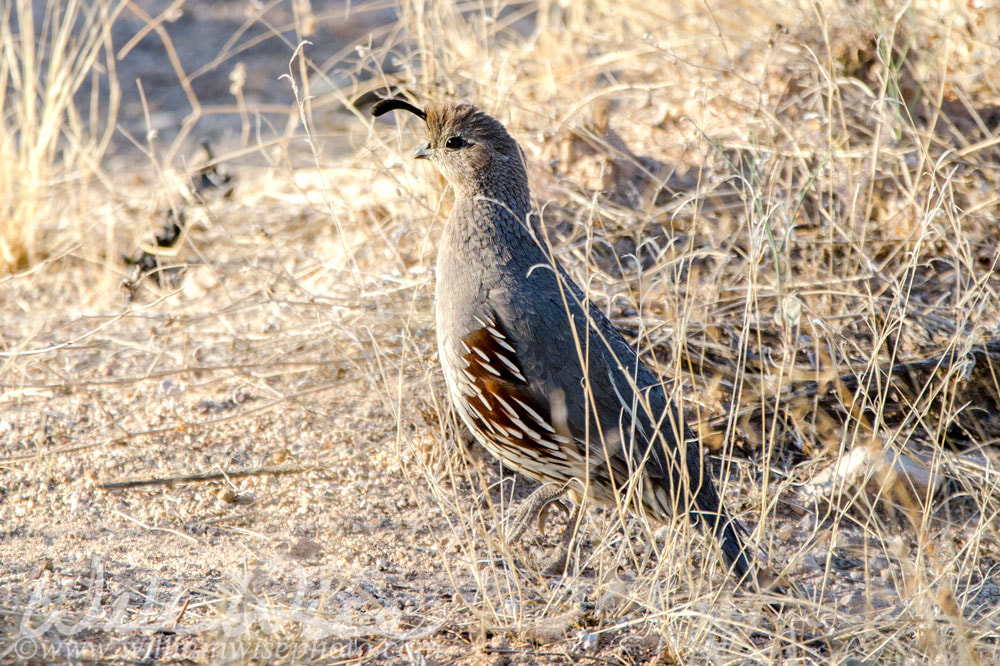 The Gambel`s quail, Callipepla gambelii, is a small ground-dwelling bird. It inhabits the desert regions of Arizona, California, Colorado, New Mexico, Nevada, Utah, Texas, and Sonora. Photographed in the arid scrub desert of Tucson in southeastern Arizona, USA. Sonoran desert and Rincon Mountain landscapes. Saguaro National Park.  The Gambel`s quail, Callipepla gambelii, is a small ground-dwelling bird. It inhabits the desert regions of Arizona, California, Colorado, New Mexico, Nevada, Utah, Texas, and Sonora. nnPhotographed in Sweetwater Wetlands Park, a reclaimed wastewater treatment facility managed for wildlife habitat in Tucson, Arizona. It is a stream riparian oasis in the southwestern desert. Photographed in June 2018.  William Wise Photo Nature Notes is a wildlife, birding and nature photography blog documenting the beauty, design and wonder of God’s creation. -- "What a wildly wonderful world, God! You made it all, with Wisdom at Your side, made earth overflow with your wonderful creations." Psalms 104 The Message At 11:00 AM, we arrived at Colossal Cave Mountain park about an hour-and-a-half ahead of the rest of our friends from church. So we took a short mountain desert hike up the Arizona Trail. It was such a stereotypical southwestern desert scene! A hot, bright high noon sun overhead; burning sand and rocks underneath our feet; parched lips and not a spot of shade to be found. The desert mountains stretched off into the distance and a Turkey Vulture soared overhead. In this high heat, not a creature was stirring, not even a mouse! We hiked about a mile and turned back to meet our group. In a dry creek bed near the trail-head, I spotted a Blue Grosbeak singing in the scrub. I was sort of taken aback, for it was odd to see a regular visitor in my green Georgia backyard out in this dry, brown desert. Up at Colossal Cave entrance we met up with our friends. Our group being so large, my wife and I stayed back from touring the cave (which we had both been into before). More time for photography on the short nature trail!  Black-throated Sparrow, Amphispiza bilineata. The black-throated sparrow is a small American sparrow primarily found in the southwestern United States and Mexico. It is sometimes referred to as the desert sparrow, due to its preferred habitat of arid desert hillsides and scrub. Photographed in Colossal Cave Mountain Park in the arid scrub desert of Tucson in southeastern Arizona, USA. On all my last visits to the Tucson International Bible Conference over the last 25 years of my salvation, reptiles were the focus of my desert treks, if time allowed for any treks at all. But with birding being my “new thing”, the afternoon was filled with excitement. So many Life Birds! One special shot in particular was of a Zone-tailed Hawk soaring overhead. A zoomed in display on the Nikon view screen showed a small lizard in the grip of his talons.  The ash-throated flycatcher, Myiarchus cinerascens, is a passerine bird in the tyrant flycatcher family. It breeds in desert scrub, riparian forest, brushy pastures and open woodland from the western United States to central Mexico. Photographed in Colossal Cave Mountain Park in the arid scrub desert of Tucson in southeastern Arizona, USA. |
Categories
All
Archives
September 2025
|
|
All content is ©williamwisephoto.com. Please don't steal images. My images are available at dreamstime.com. Stock sales go into the shelter photography program.
|
In December 1993 I came to know the Designer and Creator of this wonderful planet and its creatures: Jesus Christ.
|
Donations help support the animal shelter adoption photography equipment and adoption website hosting and domain fees. Thanks for your support!
|


